


































Dear Passengers,
Happy Lao New Year from Lao Skyway! As your most extensive domestic airline network, we connect you to more destinations across our beautiful country than any other carrier. We understand that your journey begins long before takeoff – that’s why we’ve made booking your next adventure effortless through our mobile app and nationwide sales offices.
!"#$%&#''"()"$'* +",-./"%#0.#$1%#(1%23#(4%5.6%7.$%-3..'8()%9#.% :45;#5< =3"%/#)#>8("%5.6%#$"%3.,18()%8(%5.6$%3#(1'%8'%23"% ?$.16-2%.7%-..?"$#28.(%0"2;""(%@!A%B$.6?%#(1% 9#.%:45;#5%:2#2"%C(2"$?$8'"<%D%3.?"%23#2%23"%9#.% :45%/#)#>8("%;8,,%0"%#%-3#((",%7.$%-.//6(8-#2E 8()%2.%.6$%$"#1"$'%#(1%'.-8"25%#2%,#$)"%.6$%$#()"%.7% #-28F828"'%#'%;",,%#'%0"8()%#(%8/?.$2#(2%-.(2$806E 28.(%2.%.6$%/8''8.(%.7%(#28.(#,%1"F",.?/"(2%#'%#% )$""(%#(1%'6'2#8(#0,"%1"'28(#28.(%23#2%23"%&#$25% #(1%).F"$(/"(2%.7%23"%9#.%&!@%#$"%26$(8()%8(2.%#% $"#,825%0"7.$"%.6$%F"$5%"5"'<
Your comfort and safety are the cornerstones of our service excellence. Every flight with us is meticulously prepared to ensure you travel with peace of mind, surrounded by the warmest hospitality Laos has to offer.
Ready to explore? Our dedicated team at 1441 is standing by to help turn your travel dreams into reality. Thank you for choosing Lao Skyway as your wings across Laos.
With highest respects and warm regards,
G8"(28#("%2.%"8)32%8/?.$2#(2%?$.F8(-"'*%8(-,618()% &3.()'#,5*%H.6#?3#(3*%I.4".*%J61./K#5*%96#()% L#/23#*%96#()%&$#0#()*%M8"()%A3.6#()*%#(1% N3#/?#'#-4<%+"%#$"%23"%.(,5%-./?#(5%8(%9#.'% )"$%2$#('?.$2#28.(*%7$"8)32*%/"18-#,%"F#-6#28.('*% '"$F8-"'<%
Panthavy Sisongkham Managing Director
9#.%:45;#5%0.#'2'%#%(6/0"$%.7%'60'818#$5%06'8E ("''"'*%8(-,618()%23"%9#.%:45;#5%2.6$%-./?#(5% #(1%23"%9#.%:45;#5%H.2",*%;38-3%-#(%7#-8,82#2"%23"% 2$#F",%$"O68$"/"(2'%.7%.6$%-6'2./"$'< D%3.?"%23#2%9#.%:45%/#)#>8("%;8,,%0"%;",,%$"-"8F"1% 05%.6$%$"#1"$'%#(1%#(5%7""10#-4%;8,,%0"%;",-./"1% '.%23#2%;"%/#5%-.(28(6#,,5%8/?$.F"%.6$%/#)#>8("% #(1%-.(28(6"%2.%'"$F"%'.-8"25< +823%23"%38)3"'2%$"'?"-2%#(1%;#$/%$")#$1'* N.,<%:8F8"()23.()%A.((5F.() &$"'81"(2%P%NCJ%.7%9#.%:45;#5



A Khaen player adds to the fun during Pi Mai by Phoonsab Thevongsa
Panthavy Sisongkham Chief Executive Officer
Sonetysack Mylakong Administration Director
Onta Phompanya Lao Skyway Industry Director
Khamla Phomsichanh Lao Skyway Director LAO SKYWAY
Head office: Asean Road, Ban Akard, Sikhottabong District, Vientiane Capital, Lao P.D.R, P.O Box 6618 (856)21 512 027 (856)21 513 022 info@laoskyway.com, service@laoskyway.com

www.facebook.com/laoskyway
Dear Readers,
Welcome to Lao Sky, the inflight magazine of Lao Skyway, and best wishes for a happy Lao New Year!
In this issue, learn more about the fun, festive time of Pi Mai or the Lao New Year.
Visit one of Laos’ longest caves, which even offers overnight camping treks!
Vientiane has many natural attractions near the city that are perfect for weekend escapes. From waterfalls to reservoirs, there are many ways to beat the heat.
Travel by motorcycle overland from Vientiane to Southern Laos. This intrepid adventure opened our eyes to more natural wonders of the country.
Thanks for being onboard,
The Lao Sky team
Group Editor-in-Chief
Editor
Contributing Editors
Creative Director
Contributing Writers
Contributing Photographer
Jason Rolan
Vannaleth Phimphachanh
Vilavanh Chanthavong
Dokfa Malaithong
Francis Savanhkham
Anita Preston / Evensong Film
sales@rdkgroup.la (856-20) 59596621
134 Samsenthai Road, Xiengyeun Village, Chanthabouly District, Vientiane Capital, Laos (856-20) 55731717 | info@rdkgroup.la









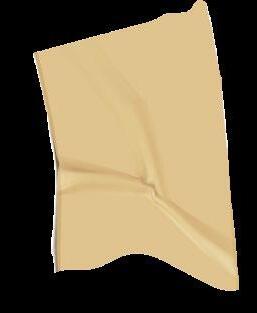







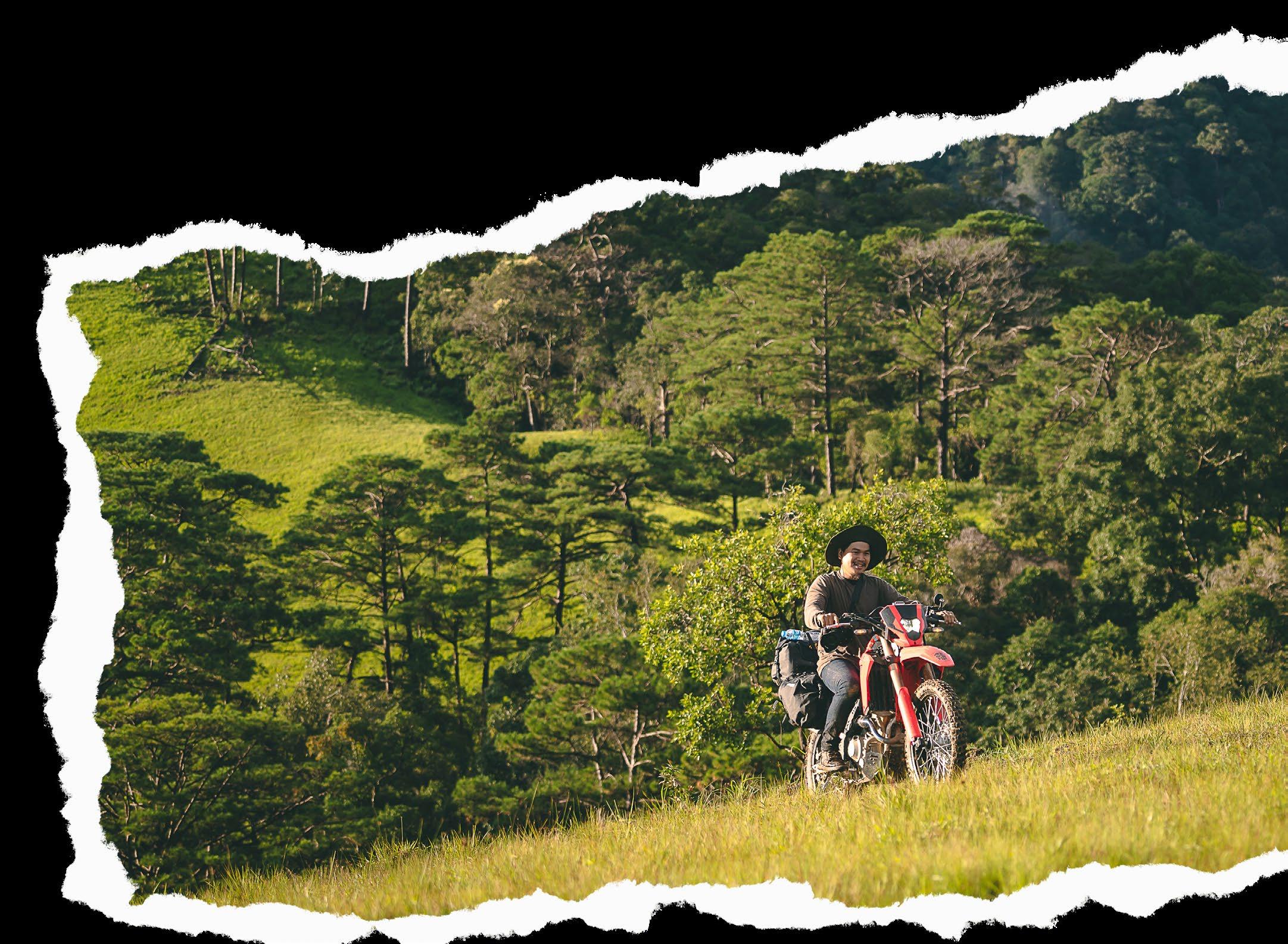

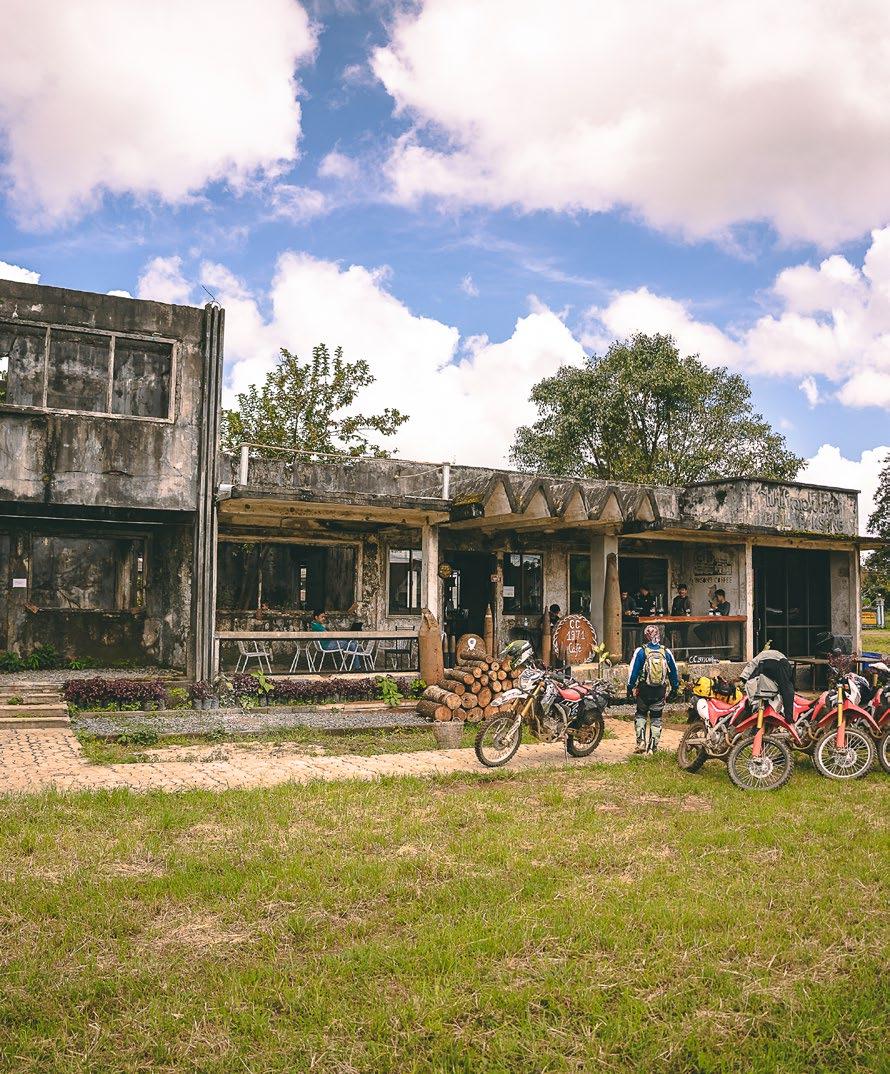





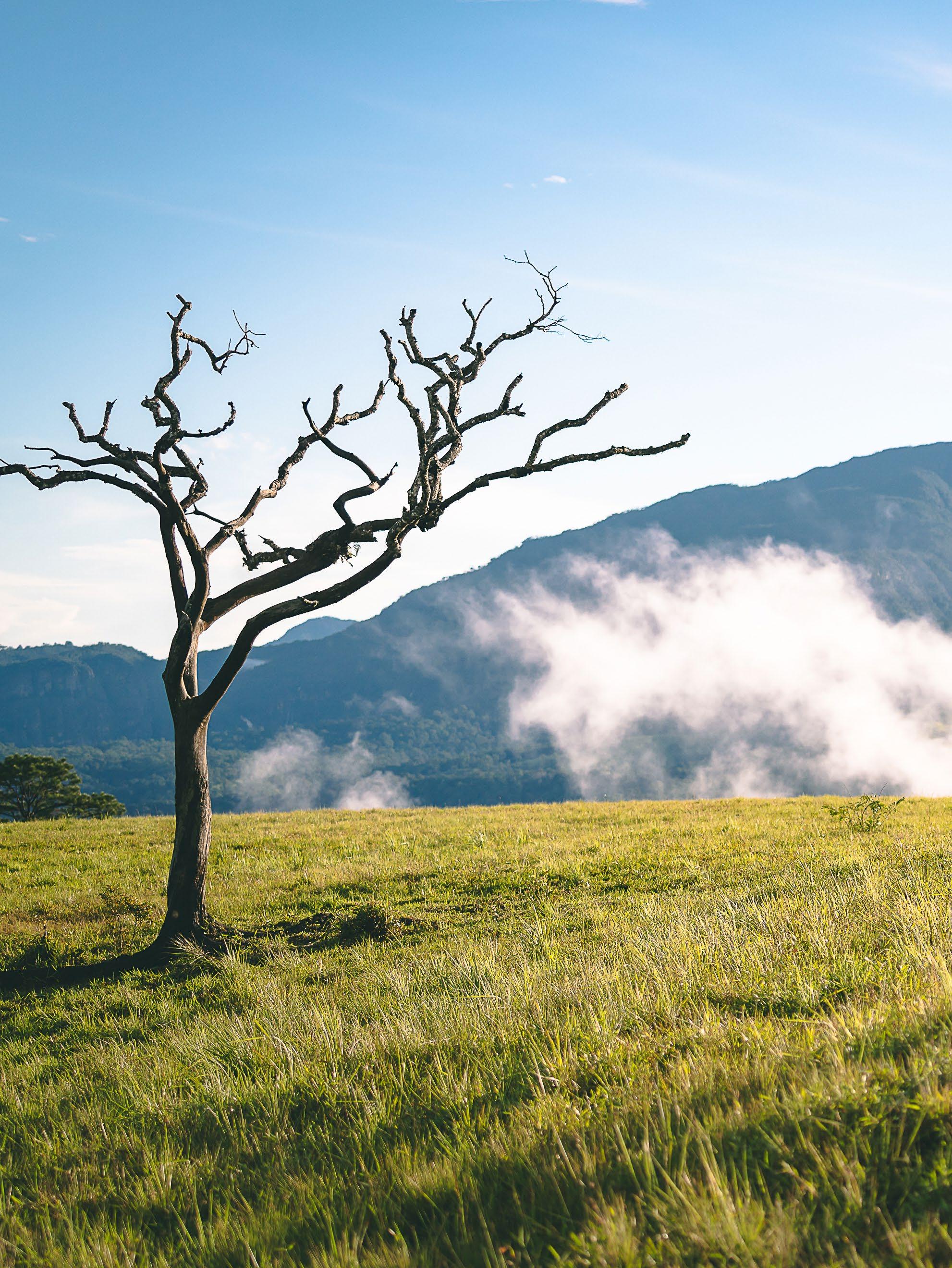

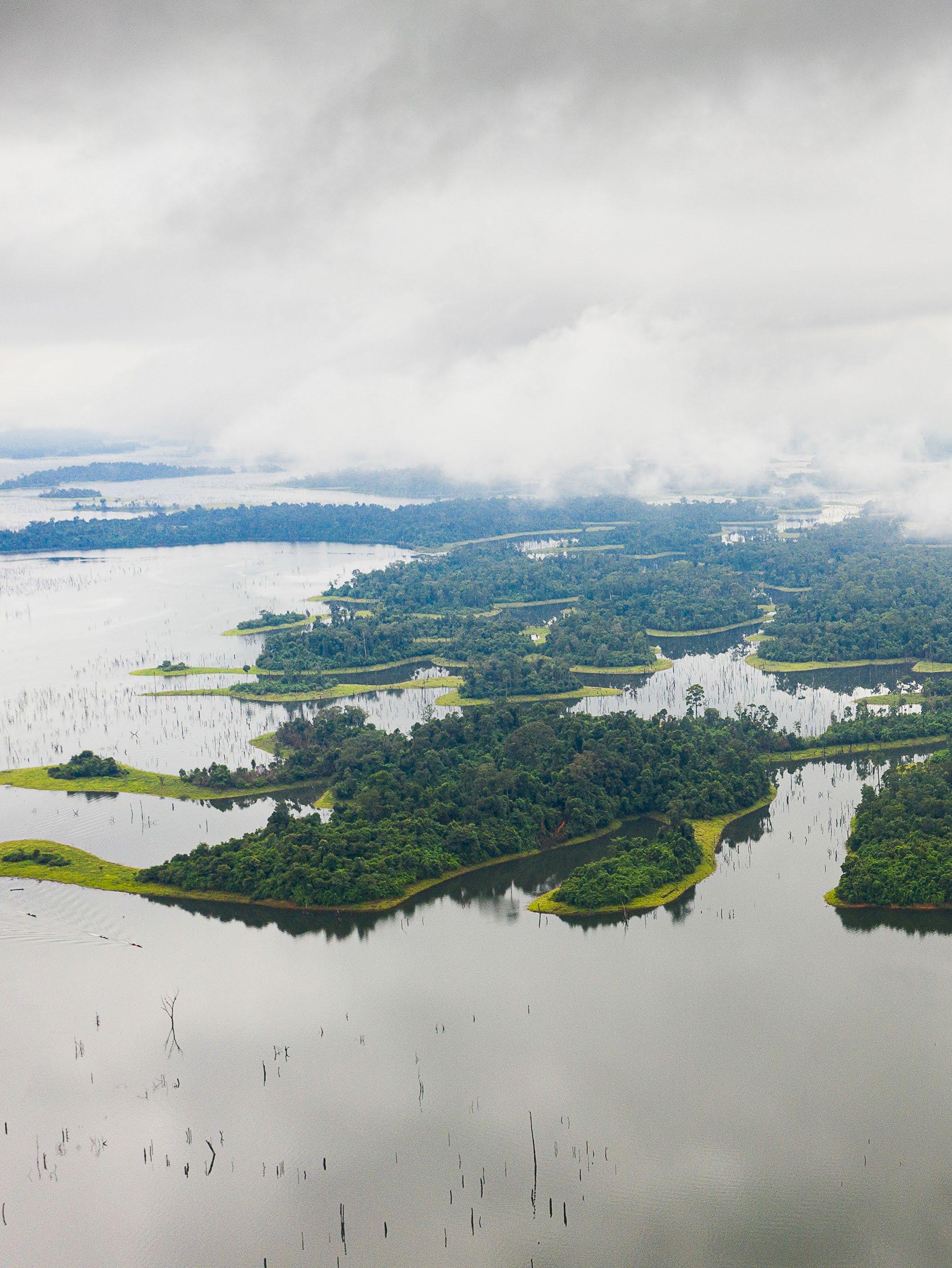

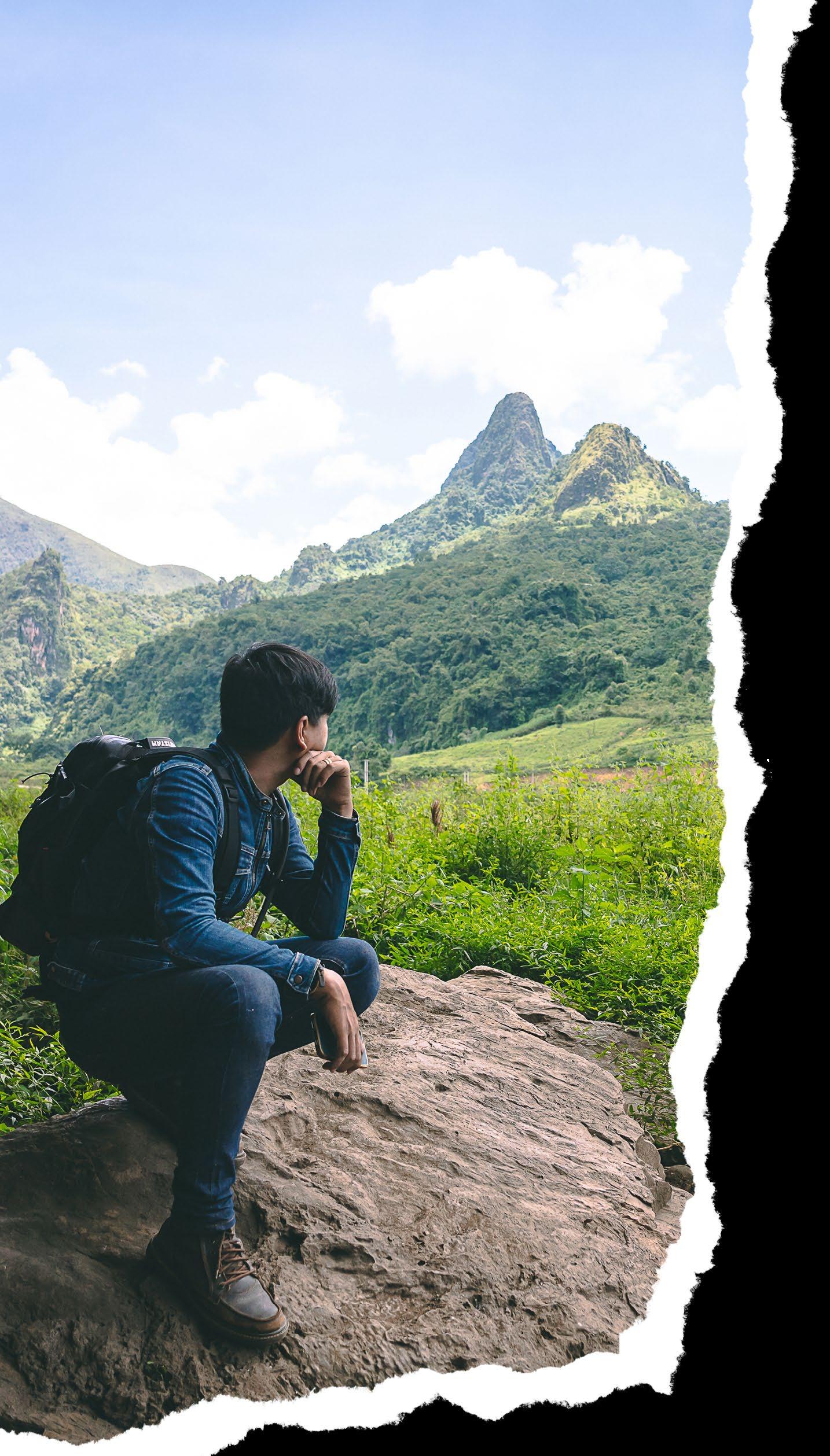
Words by Francis Savanhkham
Images by Phoonsab Thevongsa
The trouble with most travel in Laos is that it’s becoming predictable – the same tired circuit of temples and waterfalls, tourists clutching their guidebooks like religious texts. So when I set out from Vientiane on a motorbike, I had something else in mind: a 3000-kilometer loop through the country’s southern provinces, deliberately choosing the rainy season when the roads would be at their worst and the tourists at their fewest.

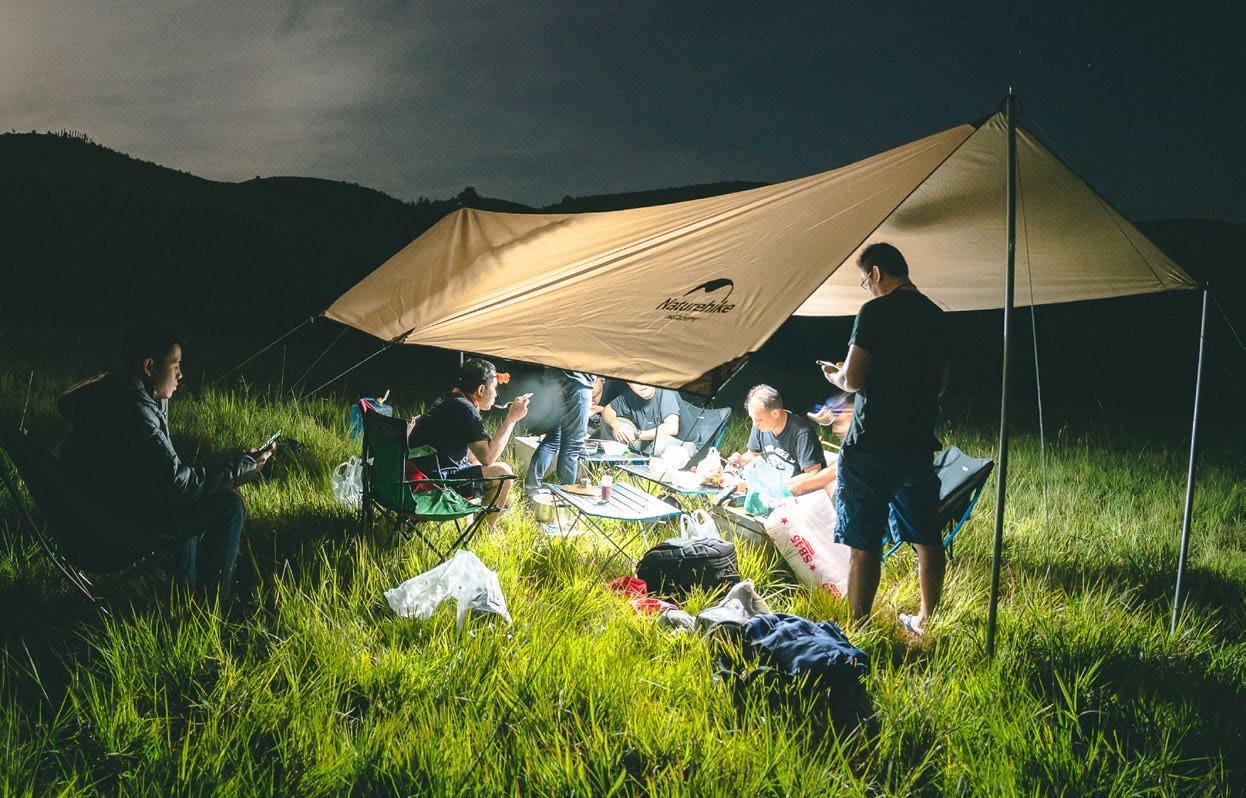
The capital’s concrete and dust gave way to mountain roads that seemed to mock the very concept of civil engineering. By sunset, I reached Meuang Anouvong, where the grassy mountains of Phou Houa Lon rose like sleeping giants. My fellow travelers – all Lao photographers with their expensive cameras wrapped in plastic against the dampness – insisted on camping. The moon, enormous and indifferent, watched us struggle with our tents.
1: Admiring the view at Xaysomboun
2: We live communally while on the road
3: Preparing to navigate the day’s trip

Day 2: 130km Xaysomboun to Xieng Khouang
Chao Anouvong Cave proved to be like most revolutionary sites in Southeast Asia: more impressive in its historical significance than its physical presence. The cave, where they finally caught the king, was unremarkable, but the surrounding mountains had a savage beauty that photography couldn’t capture. At Vang Nam Khiaw, a stream cut through the landscape like a wound, bordered by cliffs that seemed to have been cleaved by a giant’s axe. The road to Meuang Khoun was the sort that makes you question your life choices.
Day 3: 350km Meuang Khoun to Nakai (Khammouane)
The journey to Nakai was a lesson in humility. The road past Meuang Mork wasn’t really a road at all, but rather a suggestion of one – a rocky riverbed that had forgotten its purpose. Phou Sam Xoun, at 2100 meters, offered the kind of view that makes you forget the punishment of getting there. The ghost ship on Nakai reservoir’s shore looked like a missed opportunity: grandiose, stranded, and slowly rotting.
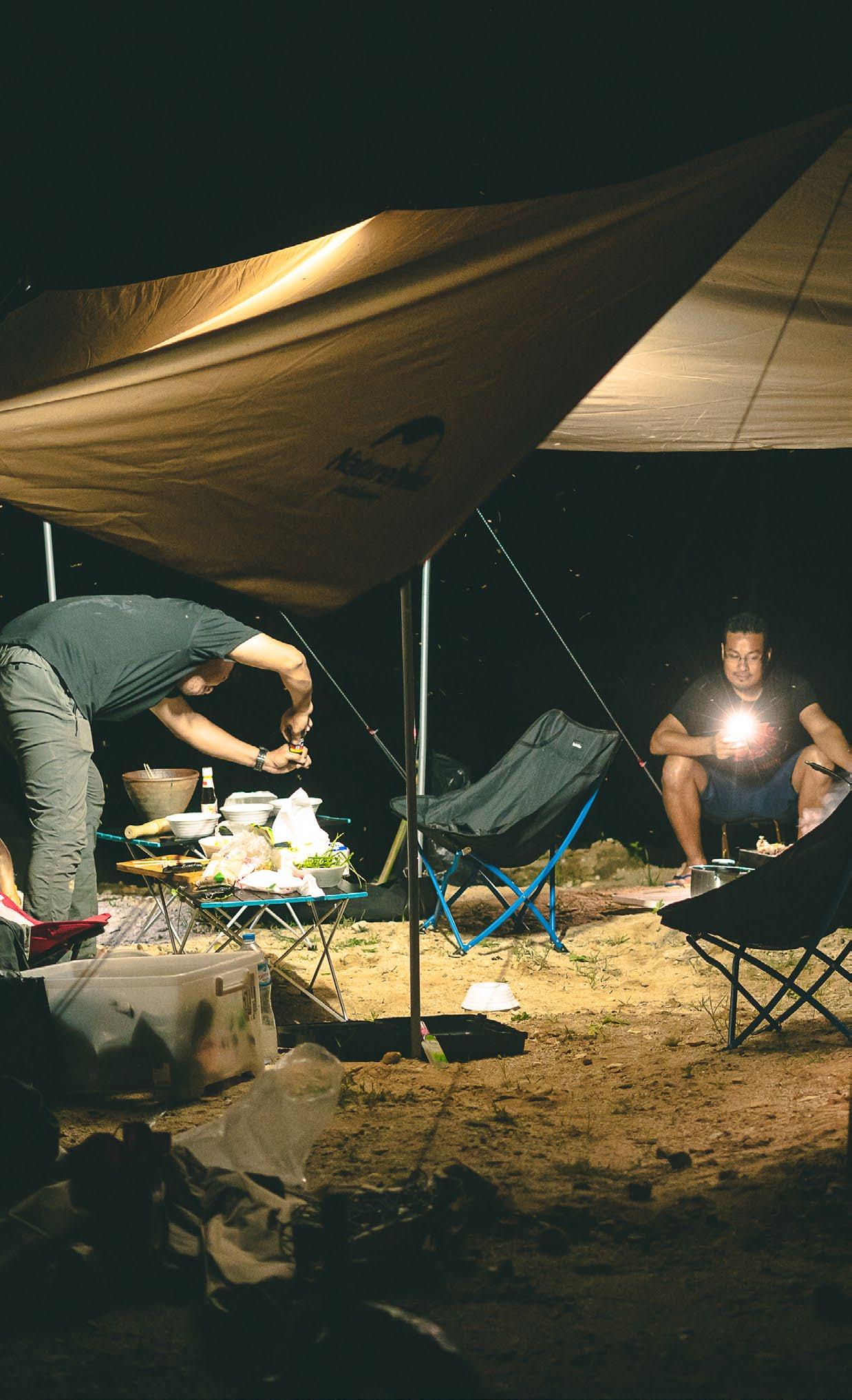
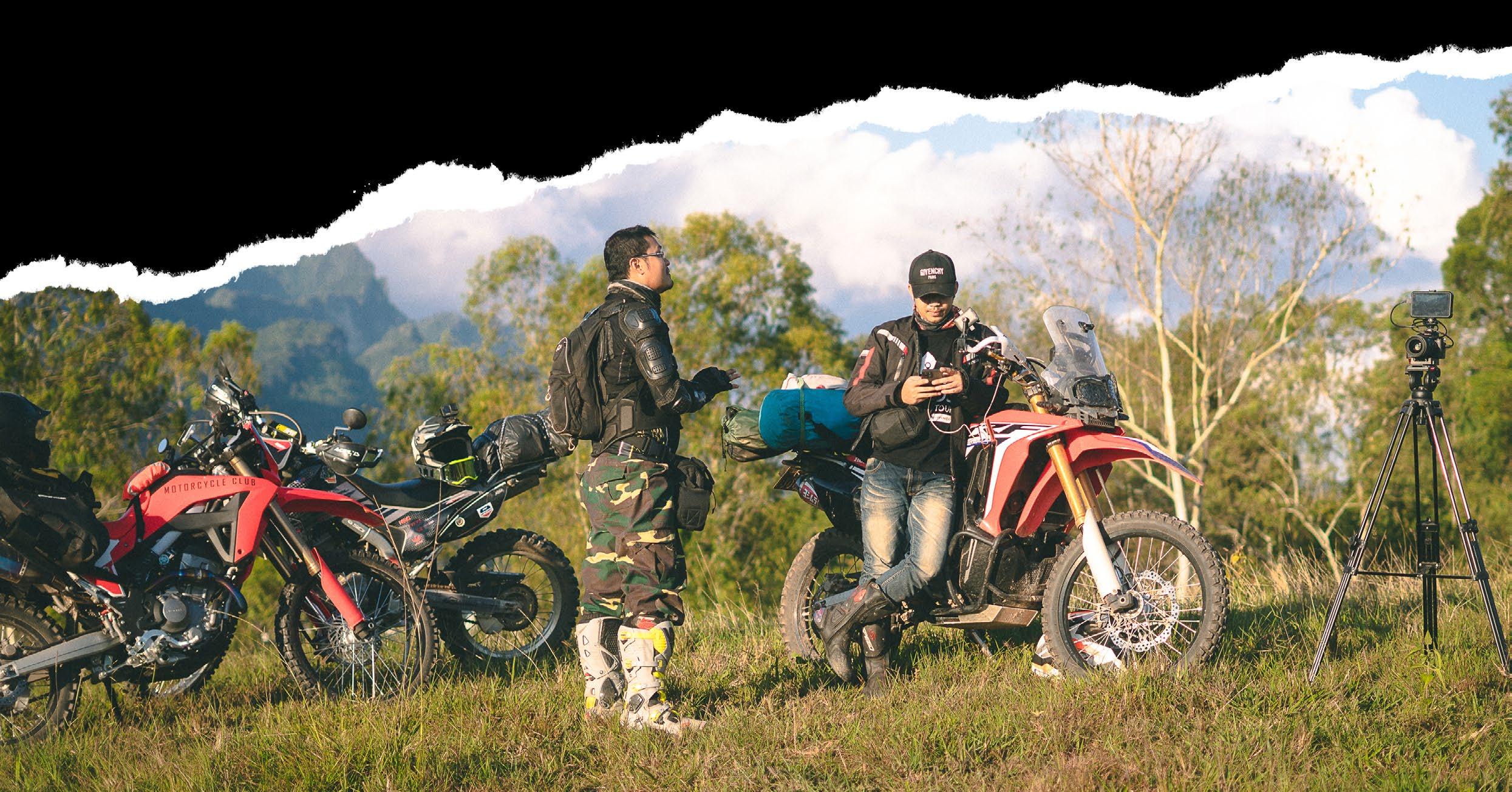
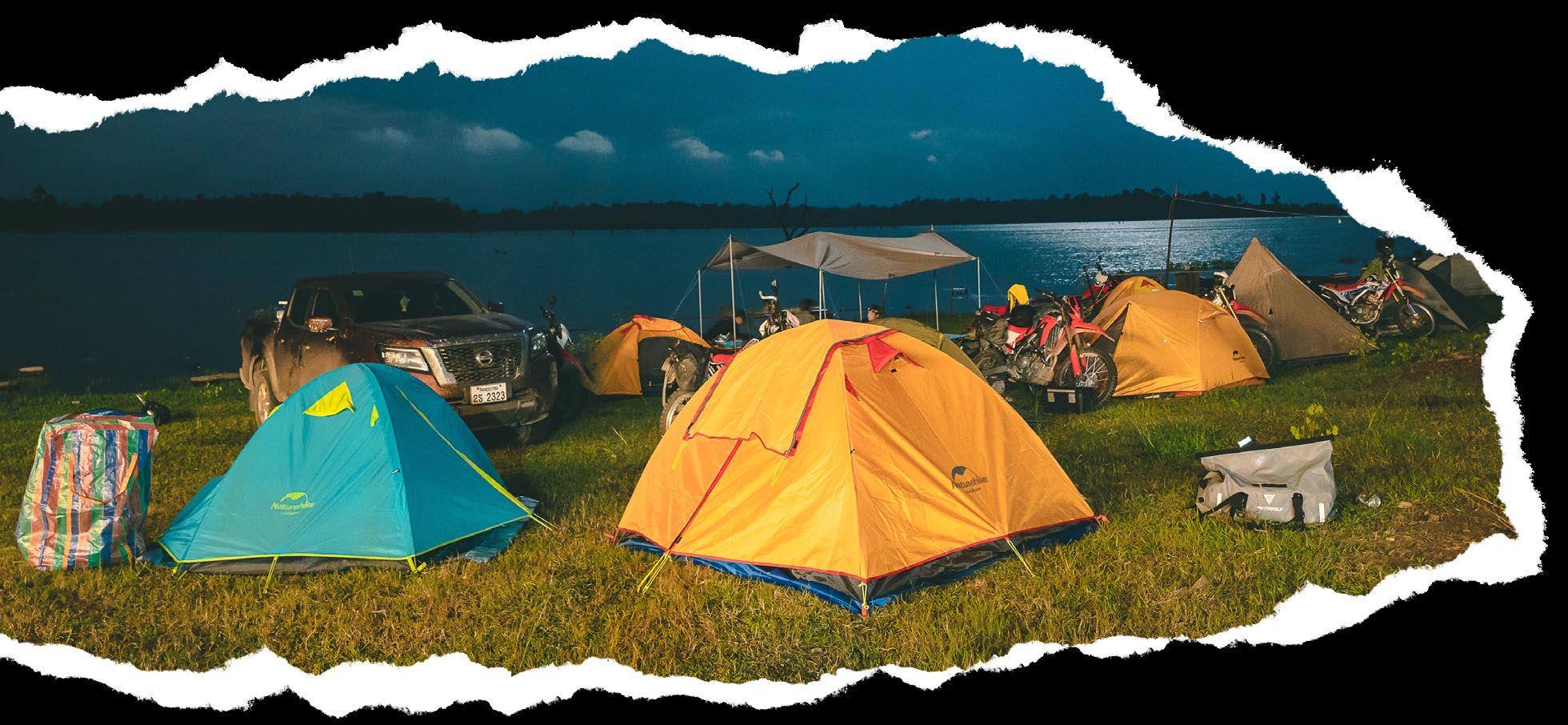


4: 460km
Only madmen and journalists drive 460 kilometers on Lao back roads in a single day. We were both. The darkness caught us still moving, our headlights cutting through the night like dull knives.
5: 90km Salavan to Sekong (Kaleum
Morning revealed what darkness had hidden: Phou Pha Souk’s caves, where centuries of flowing water had created formations that looked like abstract art. The stilted library at Wat Kang was a surprise –a delicate wooden structure that seemed too fragile for its contents.
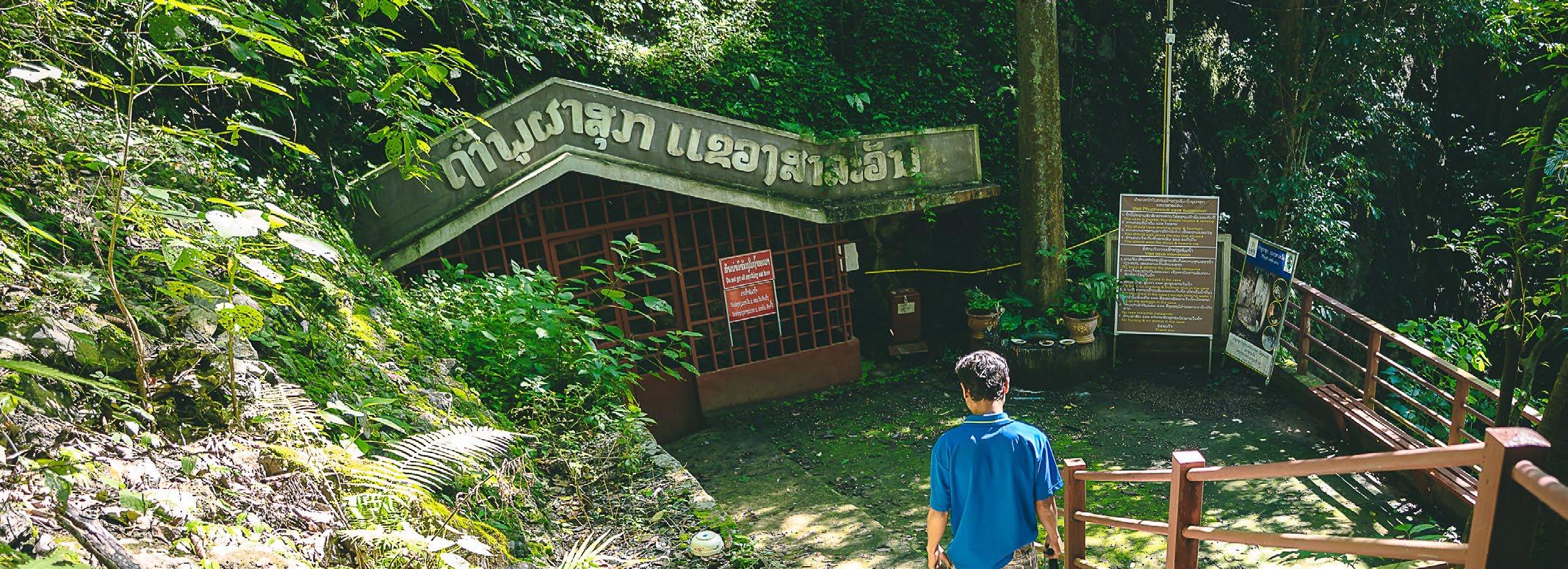
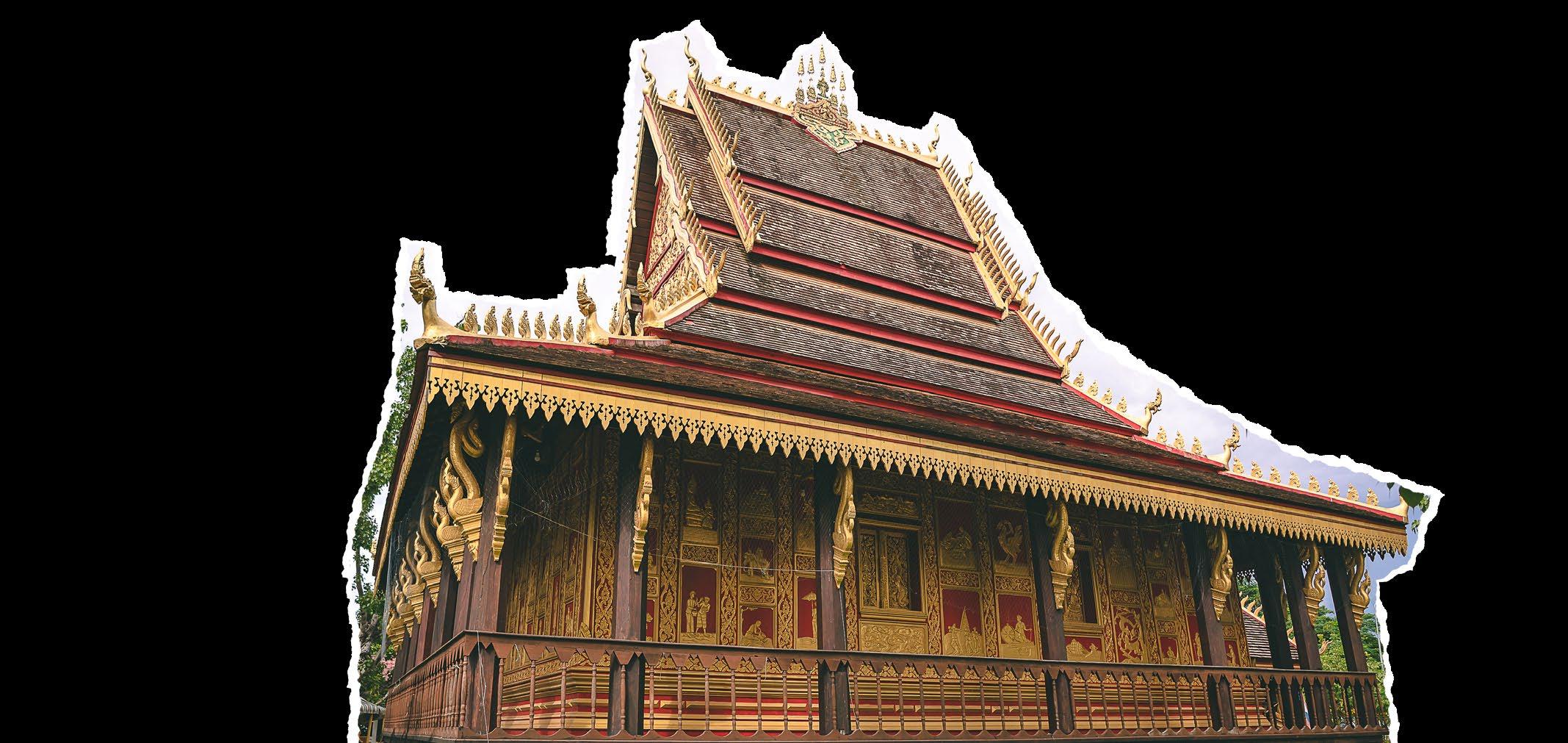
The Bolaven Plateau, with its volcanic soil and coffee plantations, represented everything that Laos wanted to be: productive, profitable, and picturesque. Mystic Mountain Coffee branded itself well, though I never discovered the mystery in these well-ordered rows of coffee plants.
The final push back to Vientiane felt like an afterthought, a necessary closing of the circle. We had covered ten provinces, seen parts of Laos that tourists never visit, and discovered what should have been obvious: that the country’s true character lies not in its carefully curated tourist sites, but in these forgotten corners where the old Laos still exists, stubbornly resisting the pull of the present.
Travel, I’ve always maintained, is only worthwhile when it shows you what you’re not looking for. By this measure, our rain-soaked circuit through southern Laos had been a success. We had found a country still raw, still real, still capable of surprising even those who thought they knew it well.

1: Waking up in beautiful surroundings
2: Phou Pha Souk Cave in Salavan
3: The stunning stilted library in Salavan
4: The vibrant views of green season travel
5: Brewing a fresh cup of fragrant Lao coffee
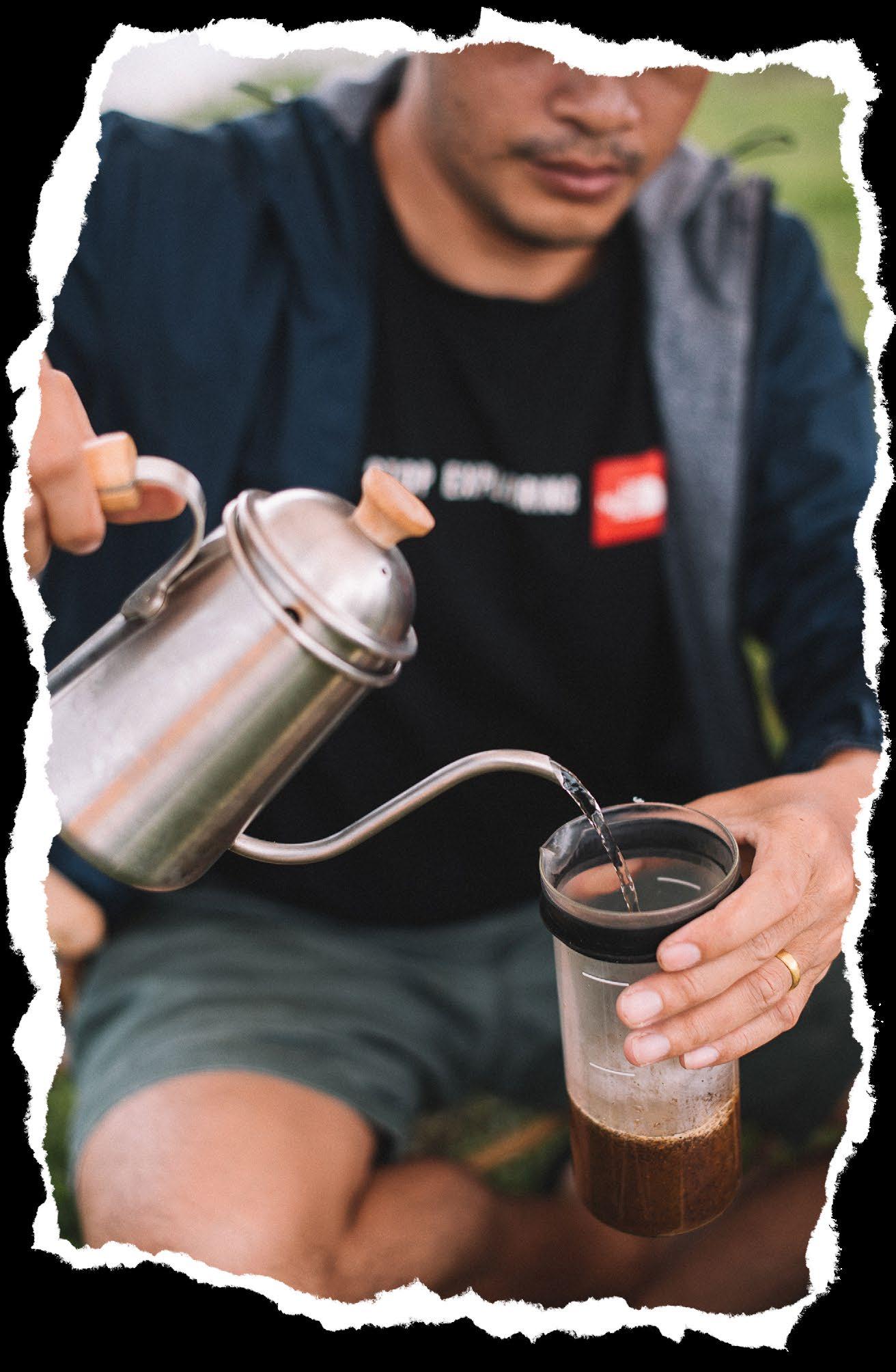
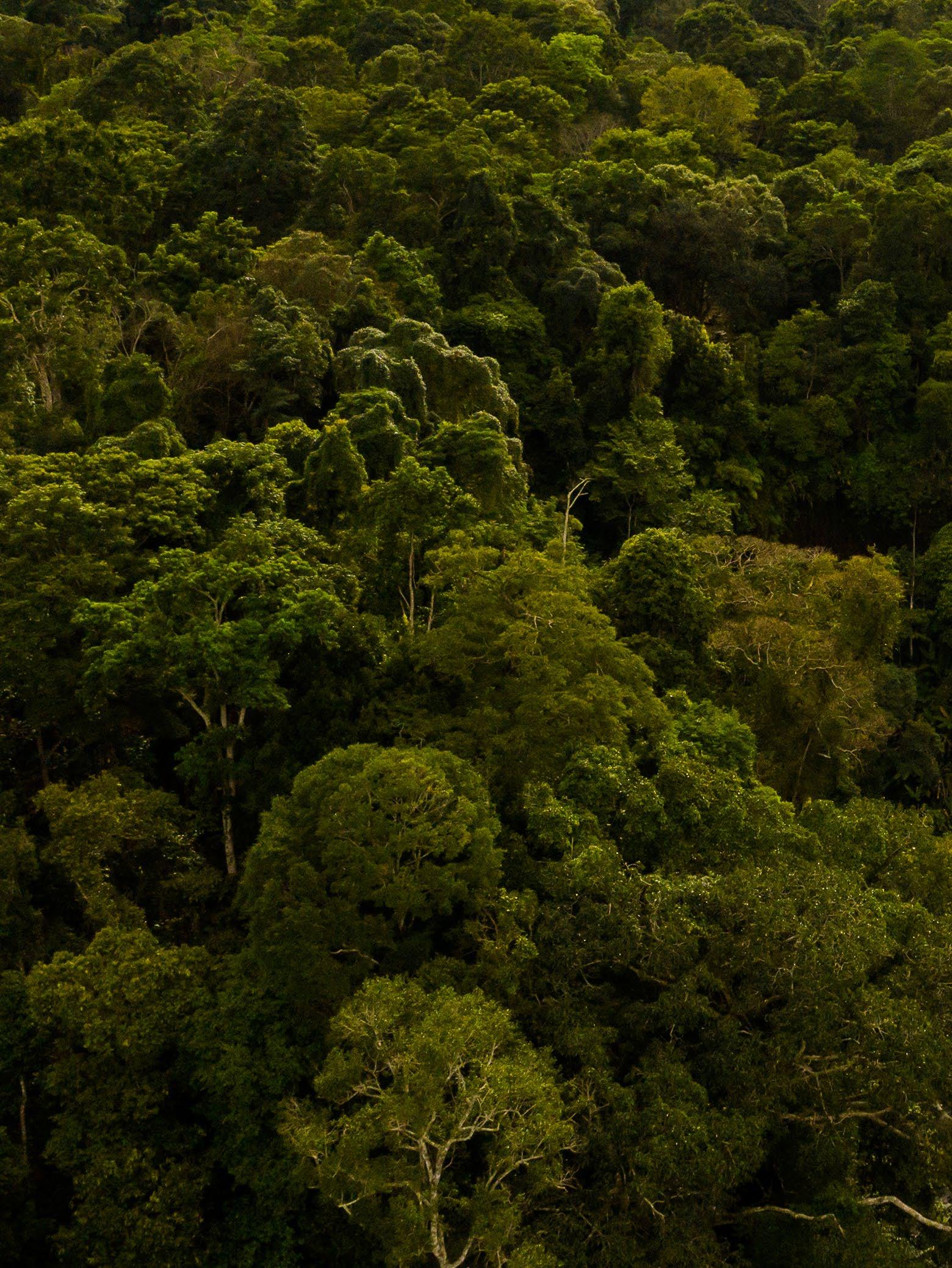
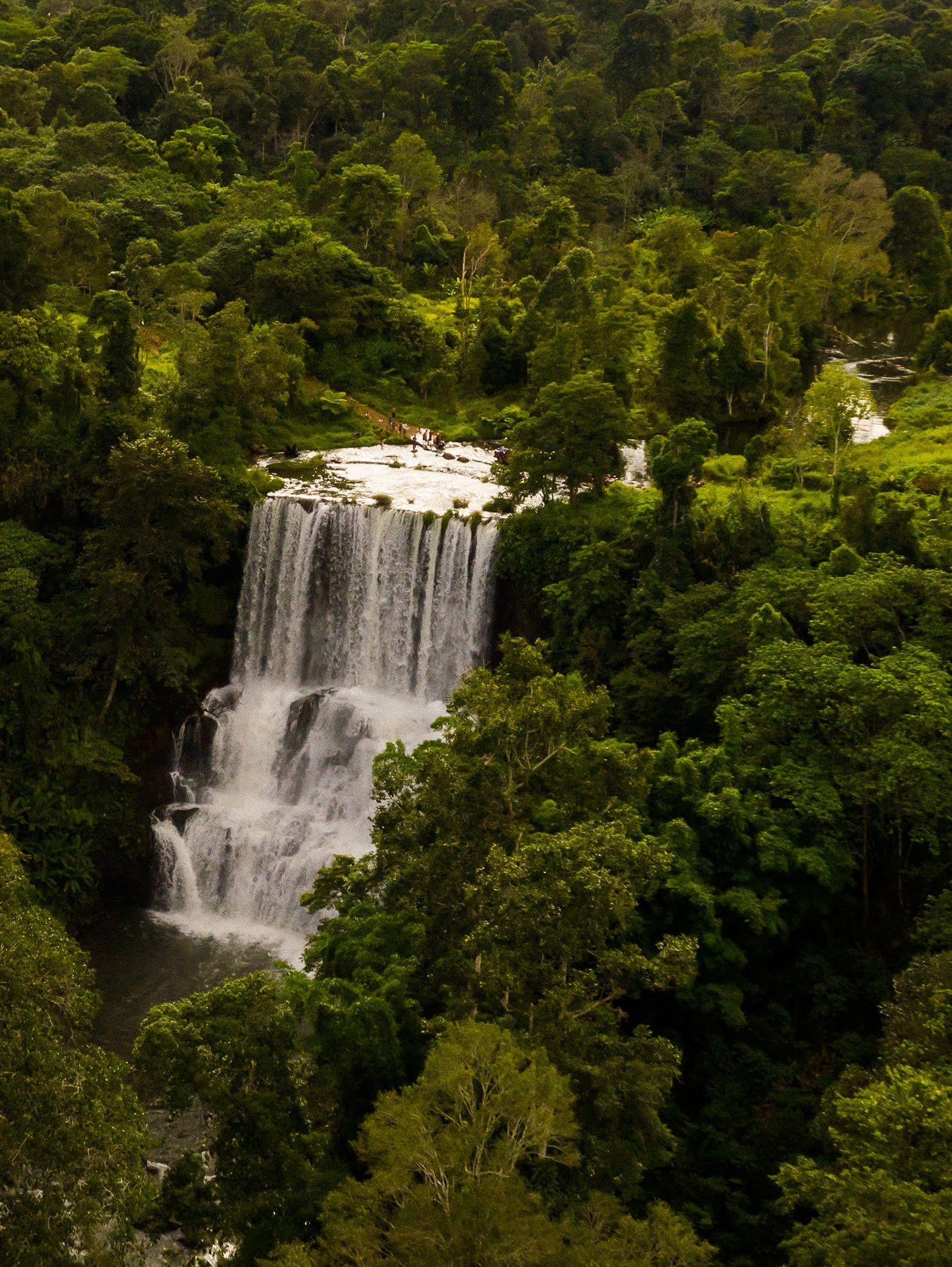
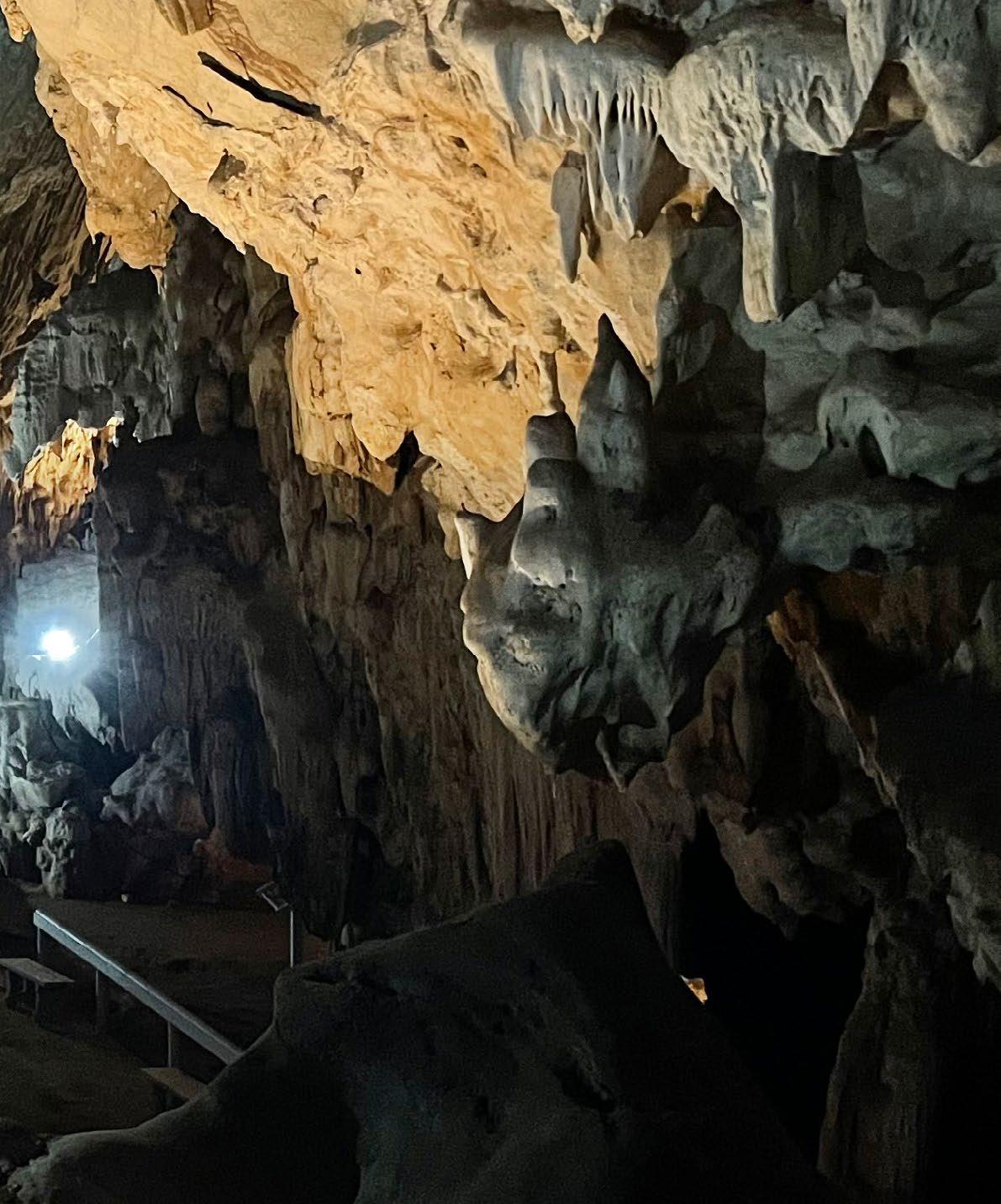

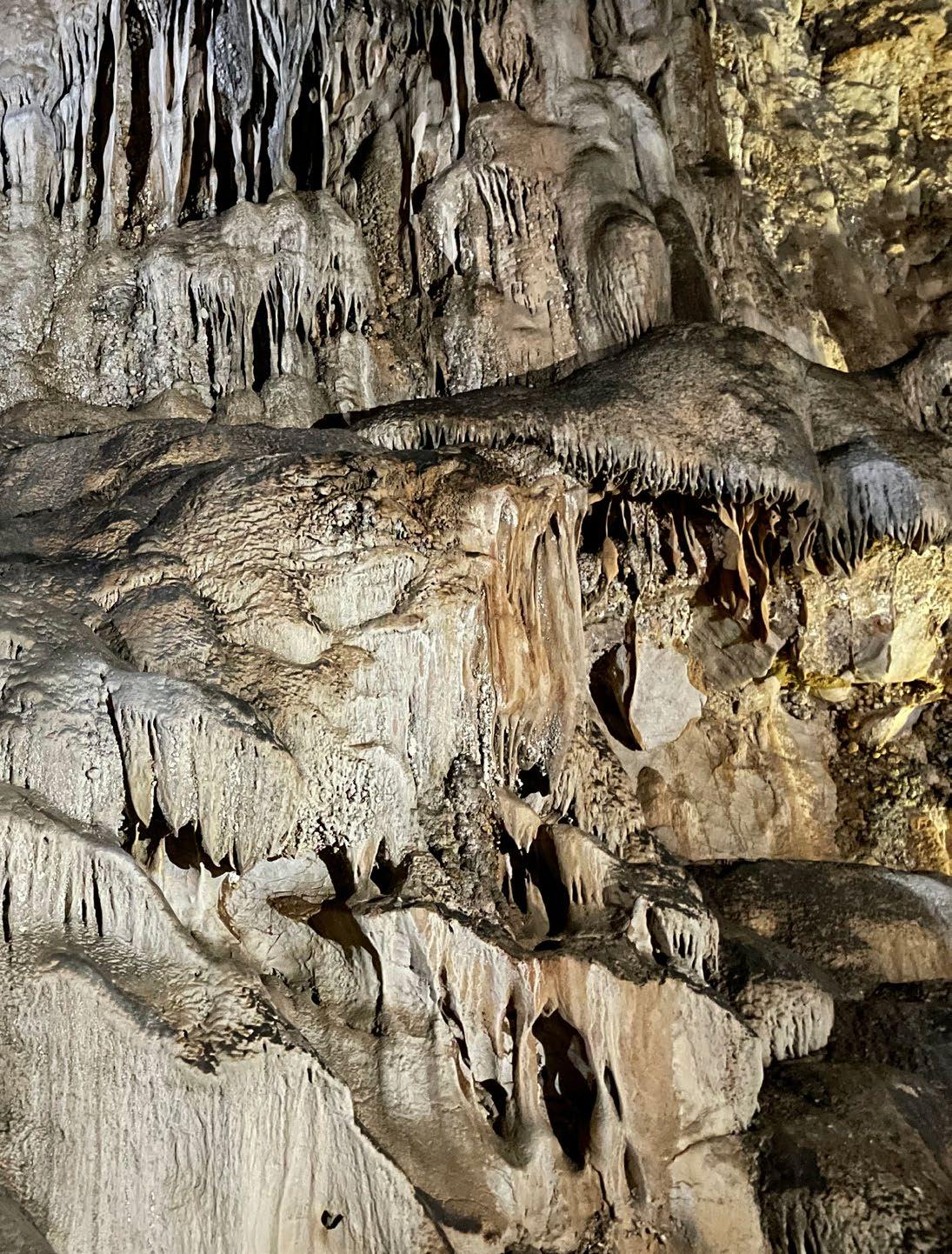

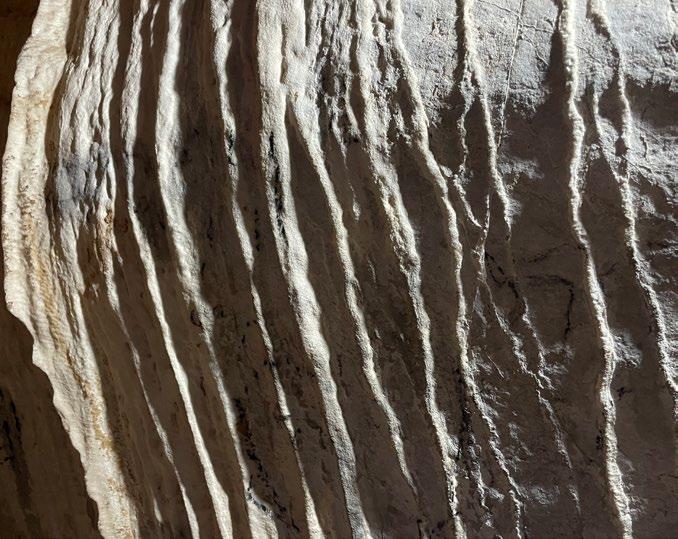



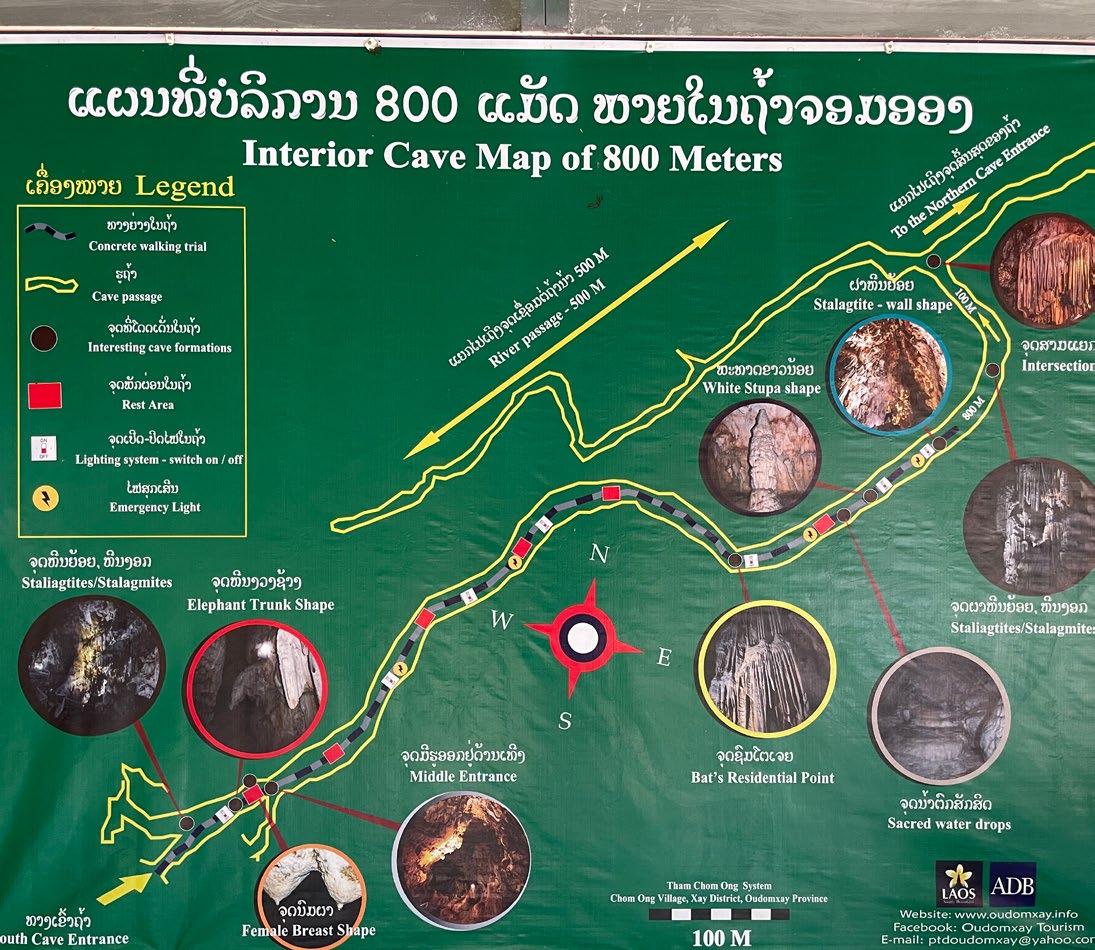


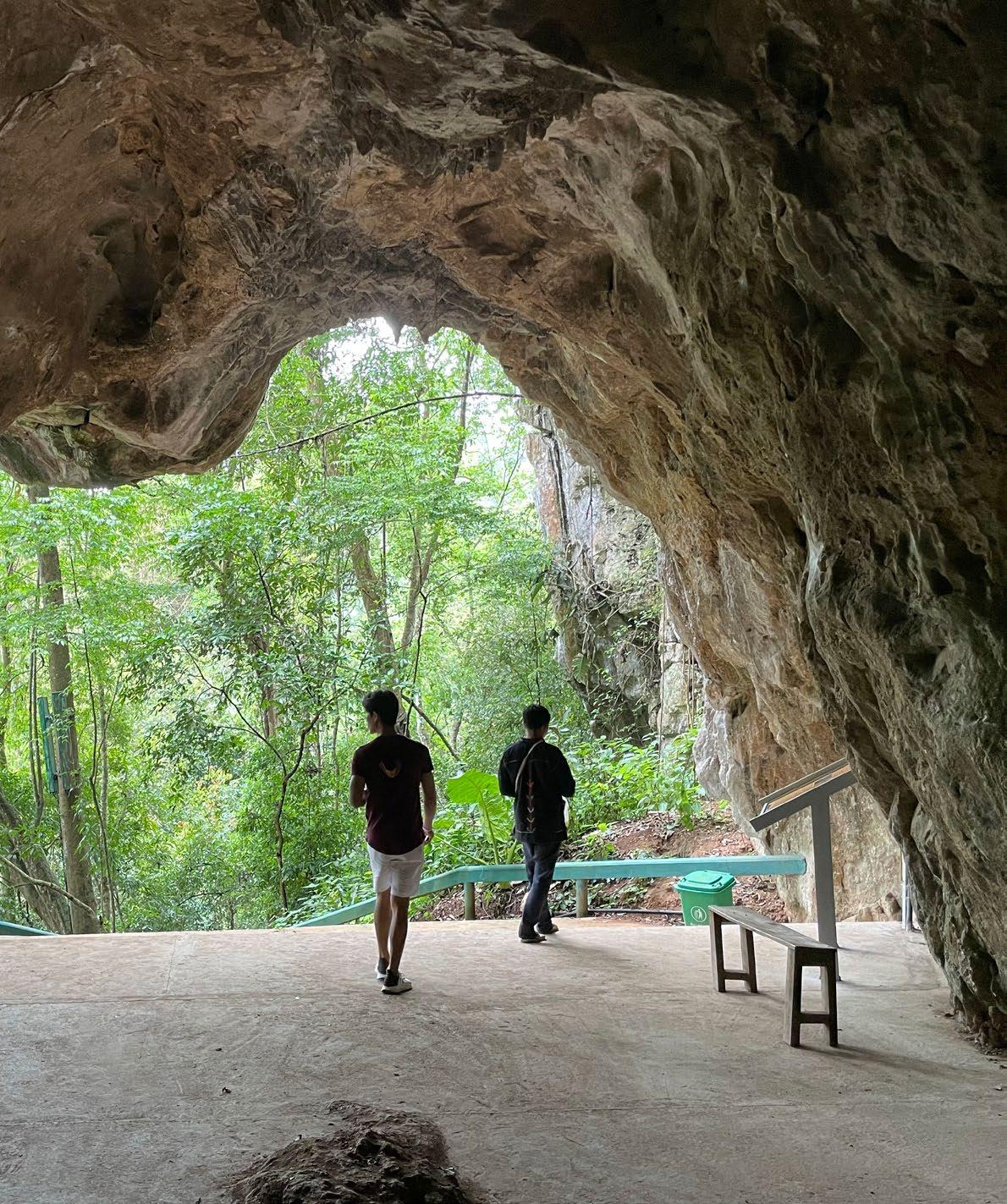
Words
by Jason Rolan

eep in the misty mountains of Oudomxay Province, an extraordinary secret lay hidden for centuries until a humble wasp led the way. It was here, over 100 years ago, that a Khmu hunter named Chuang embarked on what seemed like an ordinary day’s foraging. Armed with nothing more than a cotton thread, he tracked a wasp to its hive, hoping to feast on its larvae – a local delicacy. But what he stumbled upon instead would change the destiny of his village forever.
The mammoth cavern he discovered that day would come to be known as Chom Ong – “follow a wasp” in the Khmu language. The fertile soil around the cave entrance beckoned, and soon Chuang’s entire village relocated to this promising new
territory. For generations, the cave served merely as a source of guano and an occasional hunting ground for bats, its true magnitude remaining a mystery until 2009.
That year, a team of international speleologists ventured deep into Chom Ong’s shadowy recesses. What they uncovered was astounding: a labyrinthine system stretching over 16 kilometers, crowning one of Laos’ most extensive cave networks. Today, the first 800 meters have been thoughtfully developed with paved pathways and subtle lighting that accentuates rather than overwhelms the cave’s natural drama.
Thanks to recent infrastructure improvements funded by the Asian Development Bank, a smooth 60-kilometer loop road now connects Oudomxay town to the cave and onward to Route 13. The cave has never
been more accessible, whether you’re passing through from Luang Namtha or fancy a day trip from Oudomxay.
Conservation meets culture here –guided tours are mandatory, protecting both visitors and the cave’s pristine formations. Local guides, available at the park entrance, bring the cave’s features to life with their intimate knowledge. Beyond the expected stalactites and stalagmites that drip from ceiling to floor like frozen waterfalls, Chom Ong holds shapes that speak deeply to Lao culture: a naga serpent
1: A map of the cave’s first 800 meters
2: Draperies and other rock formations
3: The cave entrance
4: The beginning section of the cave has paved walkways and lighting CAPTIONS
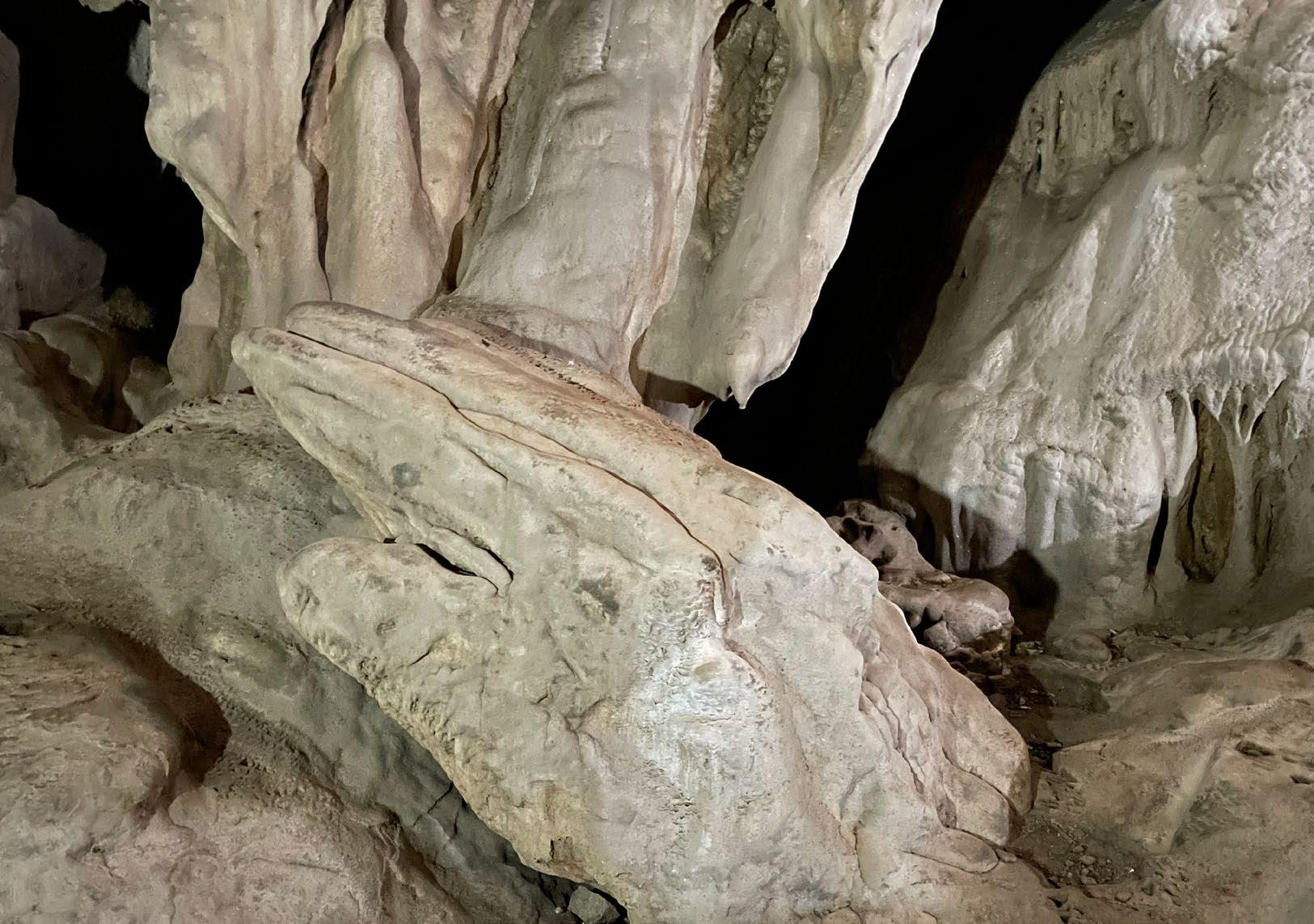
emerging from the earth, a meditating hermit frozen in stone, a white stupa reaching skyward, and perhaps most evocatively, an elephant’s trunk – an enduring symbol of Laos itself.
For those short on time, an hour-long tour along the illuminated section offers a tantalizing glimpse of the cave’s wonders. But for true cave enthusiasts, a two-day expedition awaits. Armed with flashlights and camping gear, adventurers can traverse the entire 16-kilometer length of the cave, sleeping beneath its ancient ceiling. These extended explorations require advance booking through Oudomxay’s Tourism Information Office, which can also arrange transportation.
From a hunter’s chance encounter to one of Laos’ most spectacular natural wonders, Chom Ong Cave exemplifies the serendipitous nature of discovery. What began with a wasp on a thread has evolved into a destination that

continues to captivate visitors, proving that the most extraordinary adventures often spring from the most humble beginnings.
Getting there: Lao Skyway flies between Vientiane and Oudomxay twice per week. Chom Ong Cave is about 45 km to the east of the city.

1: Geographic shifts have caused some rocks to fall
2: A resurgence pond formed near Chom Ong Cave
3: The unassuming hills in the area hide a massive cave
4: After the first 800 meters, you will need a flashlight right: Cavern ceilings can be quite high and still house bats CAPTIONS
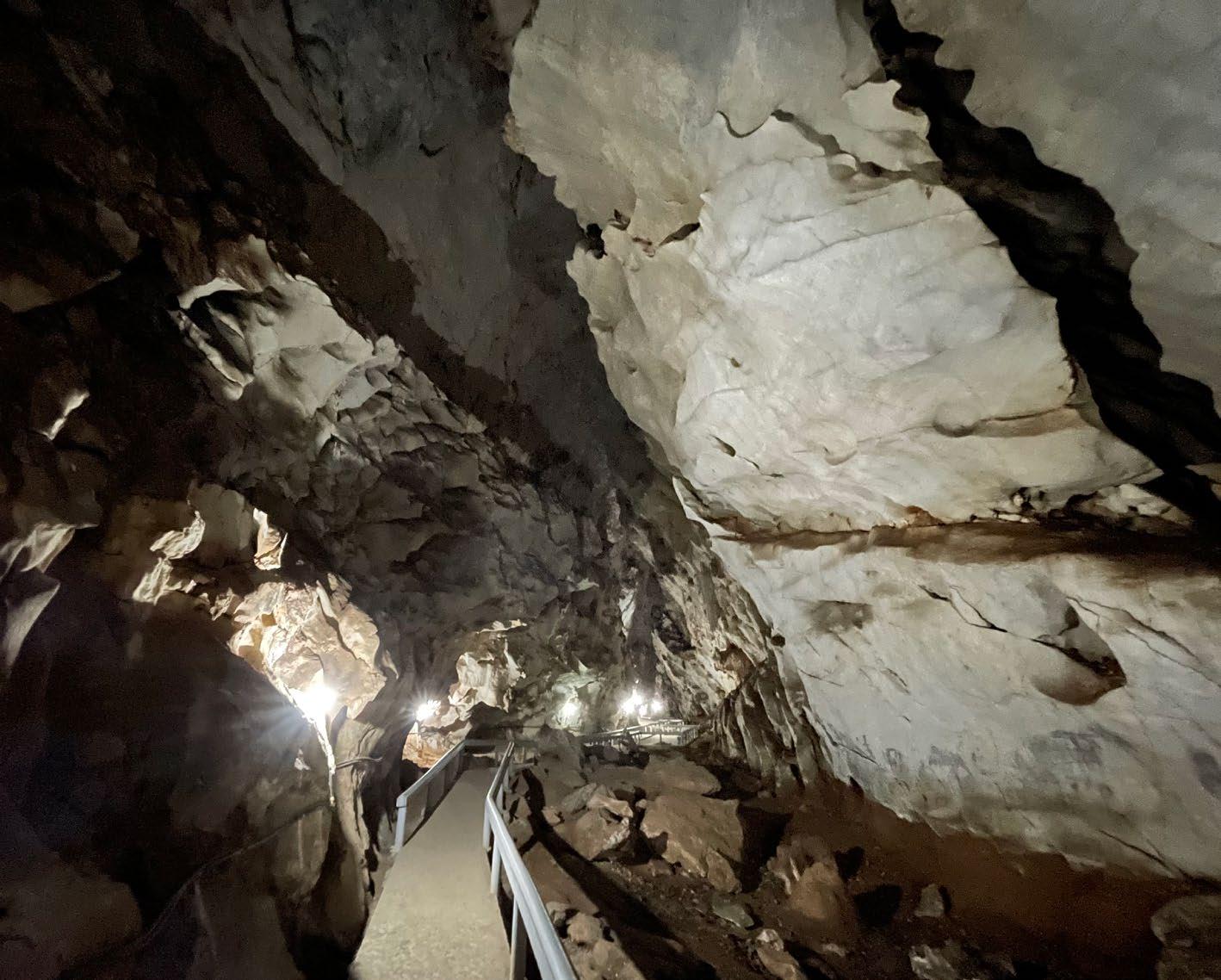


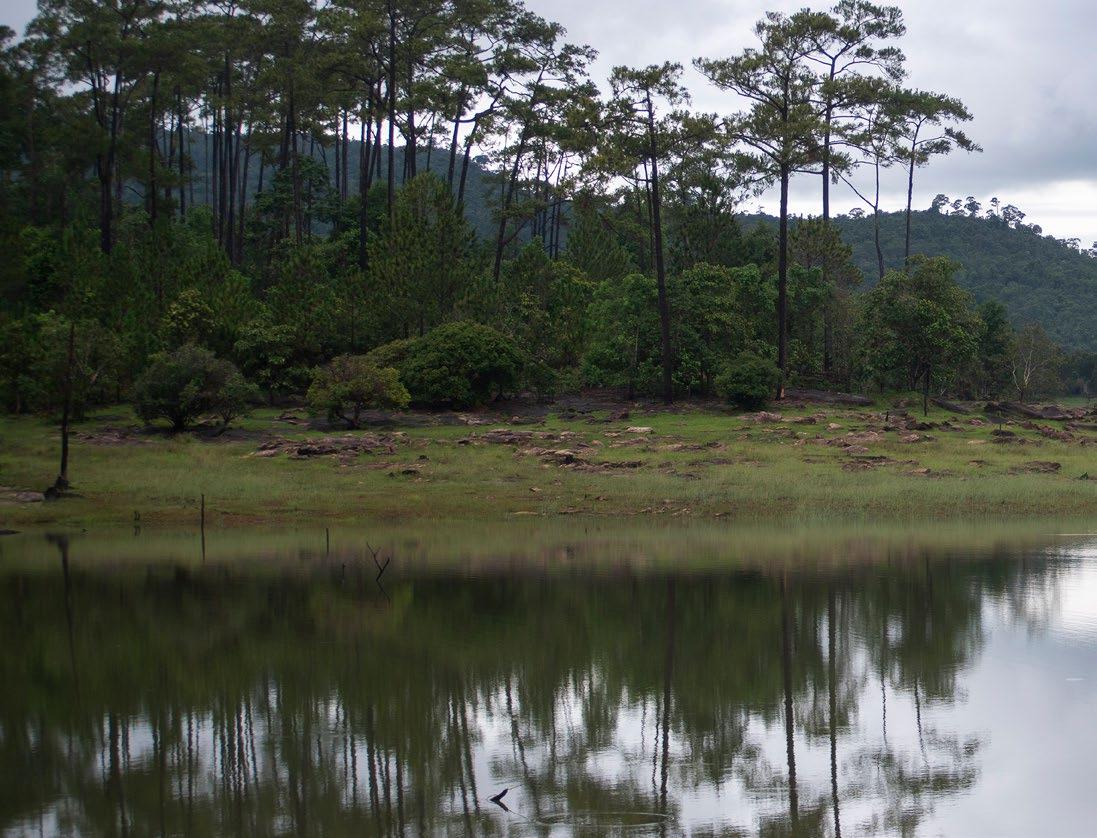

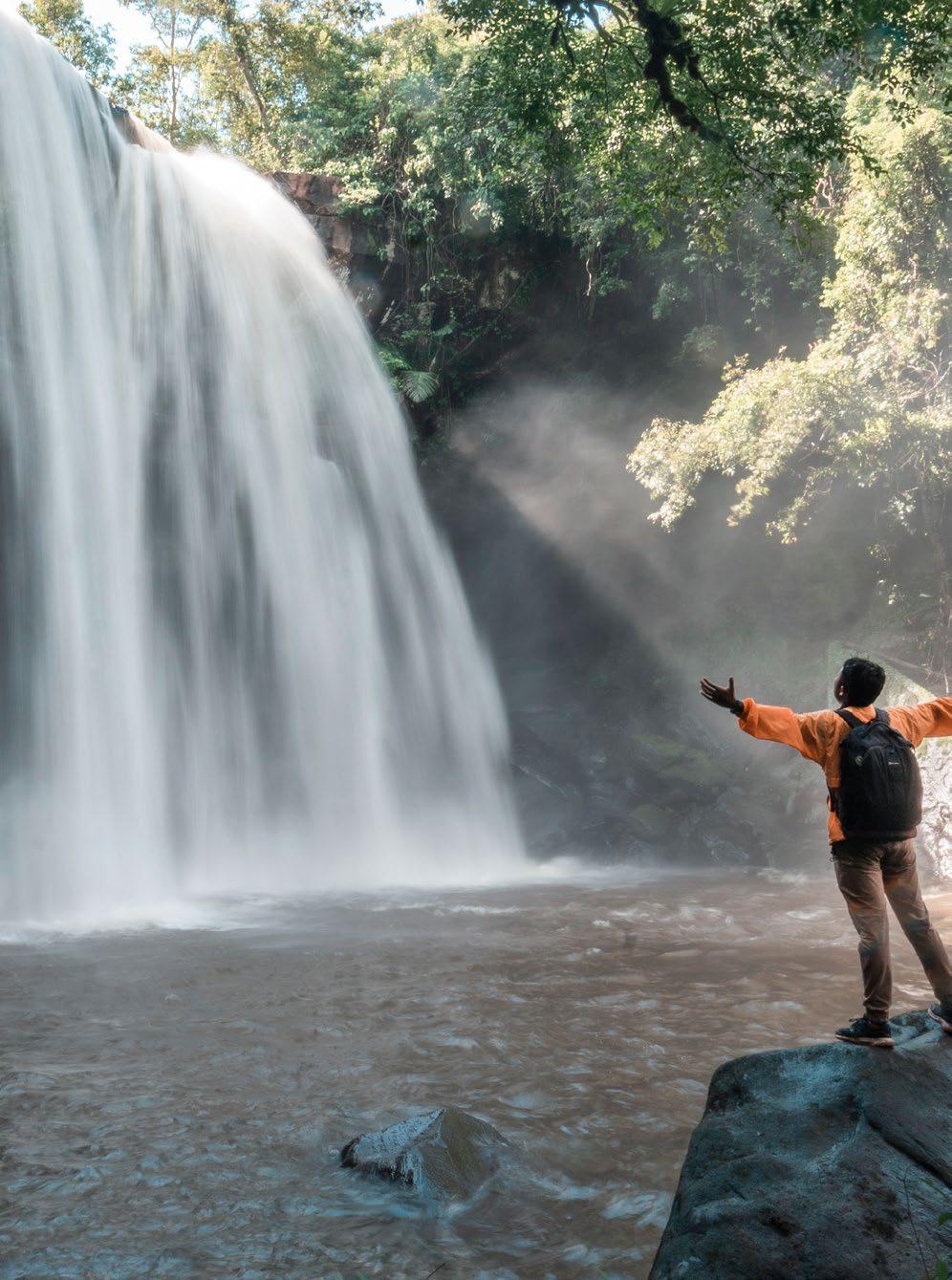






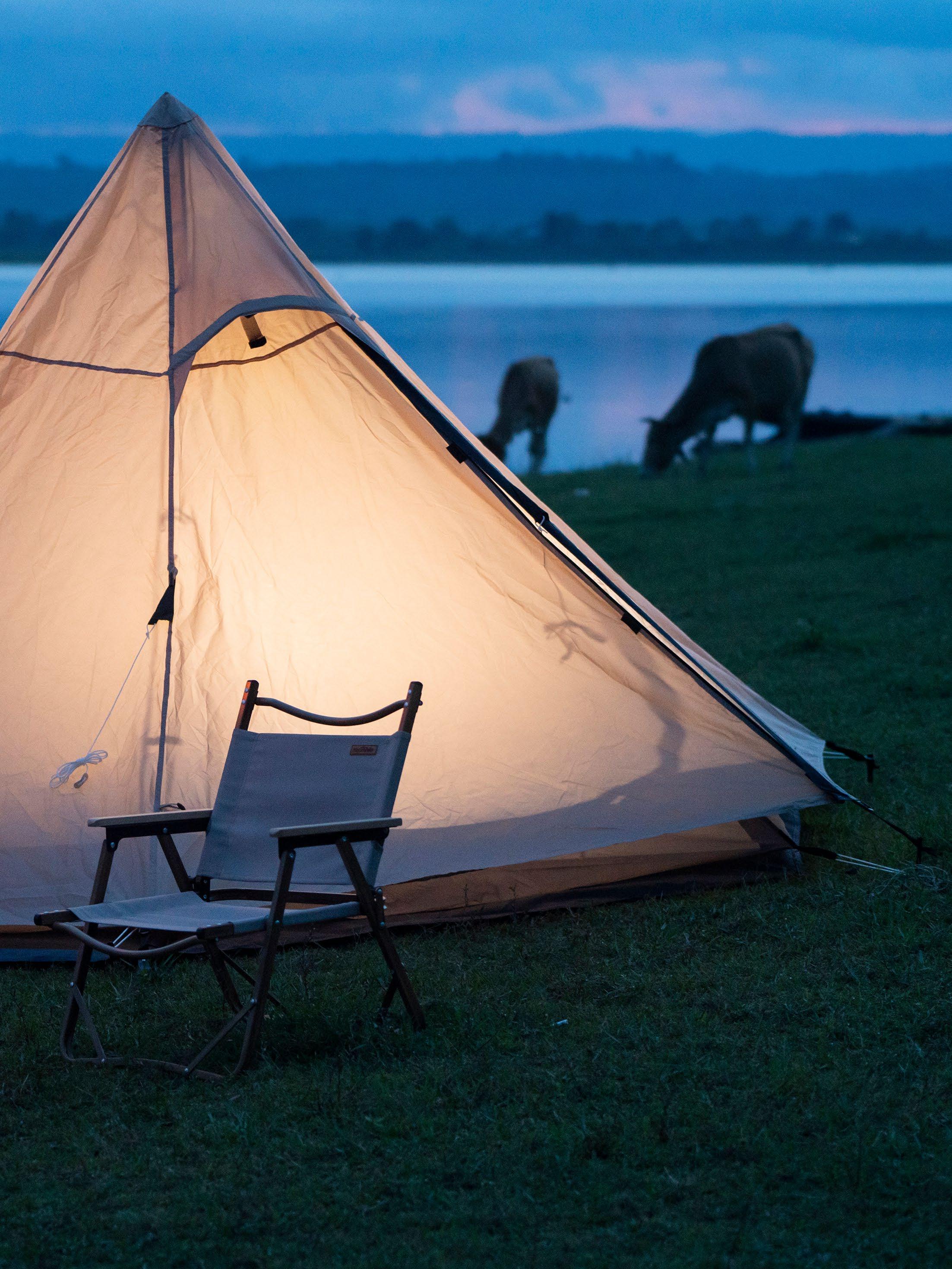

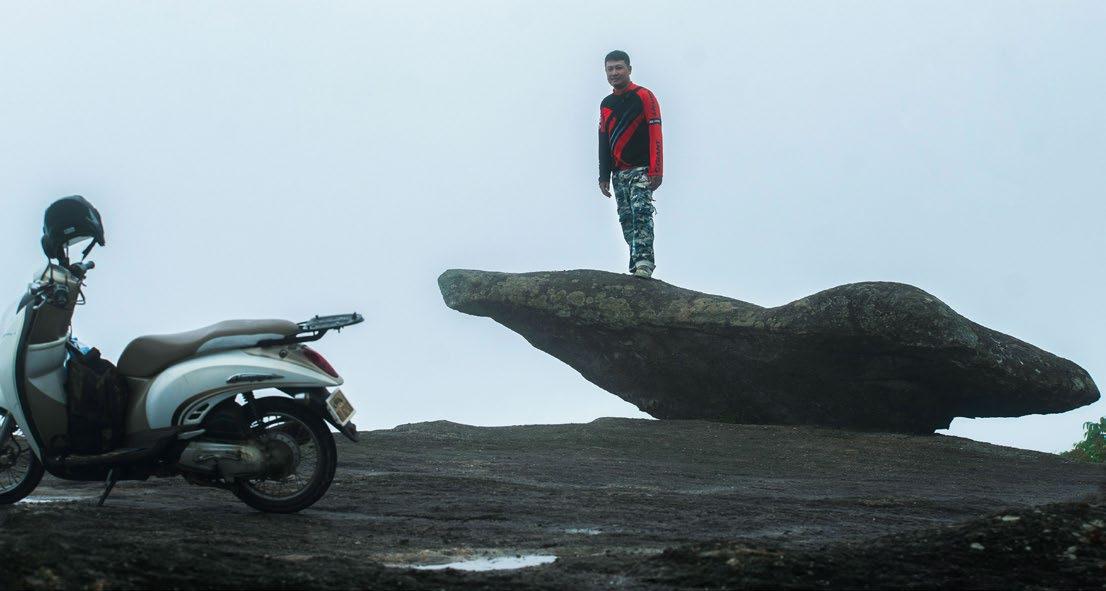


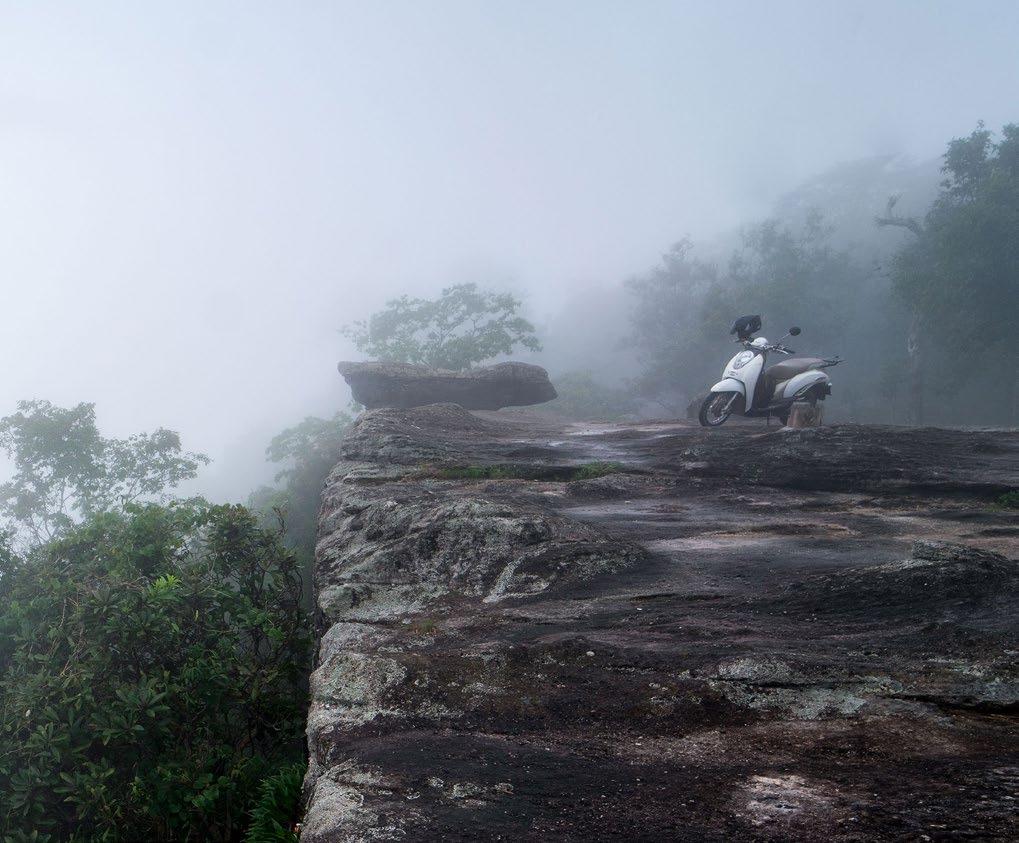
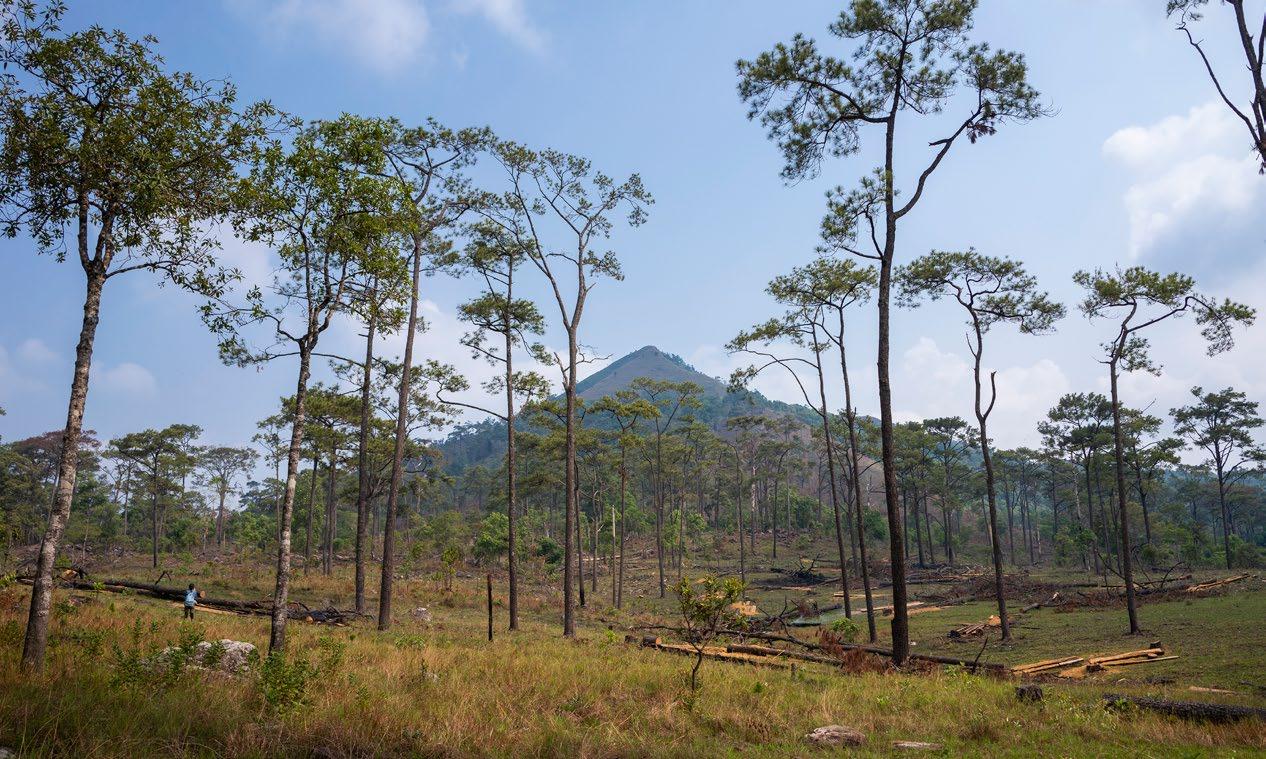


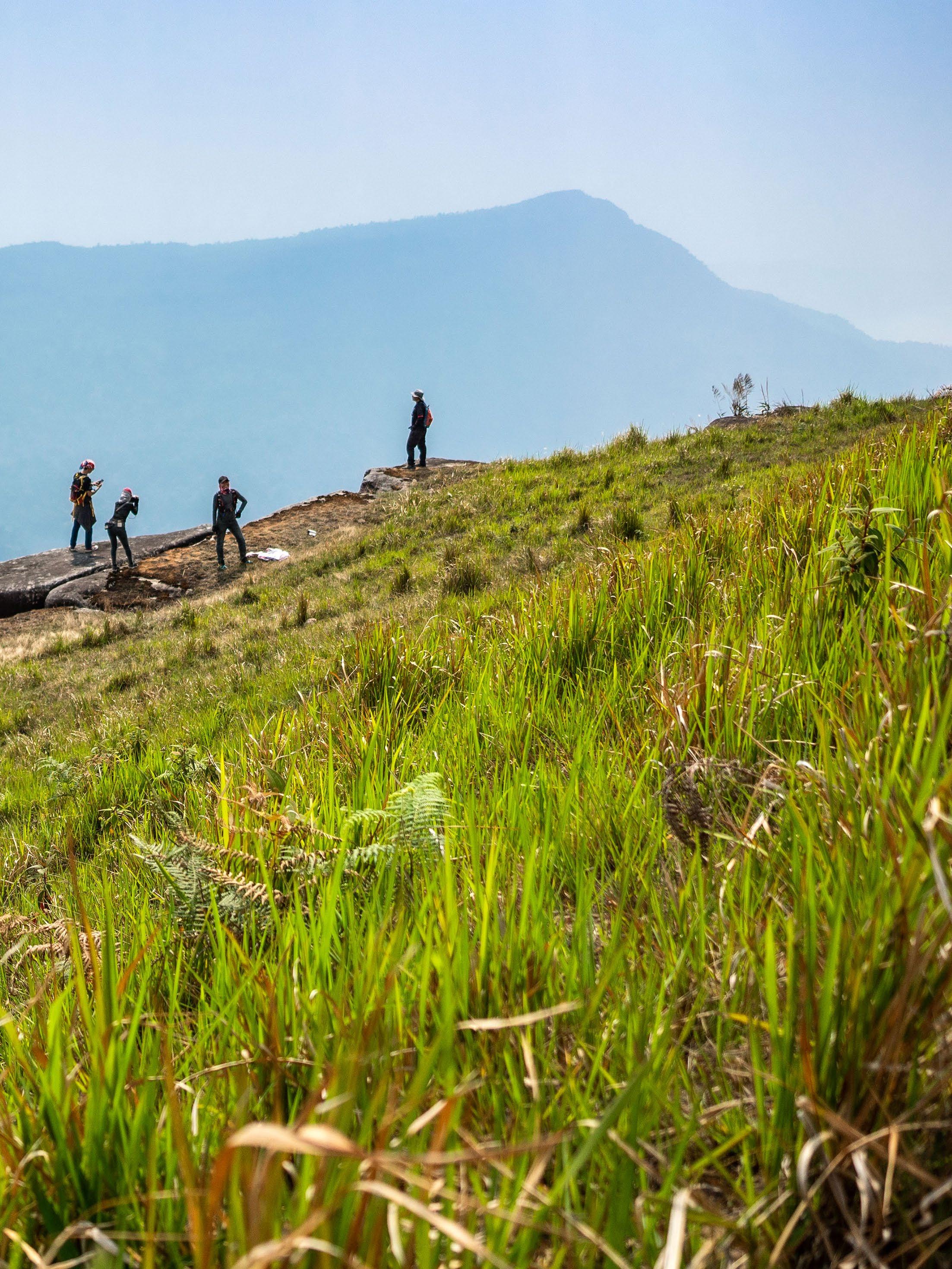

Words by Jason Rolan
Images by Phoonsab Thevongsa
While Vientiane Capital may be known primarily as Laos’ governmental and commercial hub, the city’s surroundings offer remarkable natural attractions that rival those found elsewhere in the country. Thanks to recent road improvements, visitors can easily access stunning landscapes within just one or two hours of the capital. Each of these destinations showcases the natural beauty surrounding Vientiane, proving that the capital region offers much more than its urban facade suggests.
This hidden gem features cascading water tumbling down a sandstone cliff, creating a misty spectacle perfect for photography, particularly during wet and cool seasons.
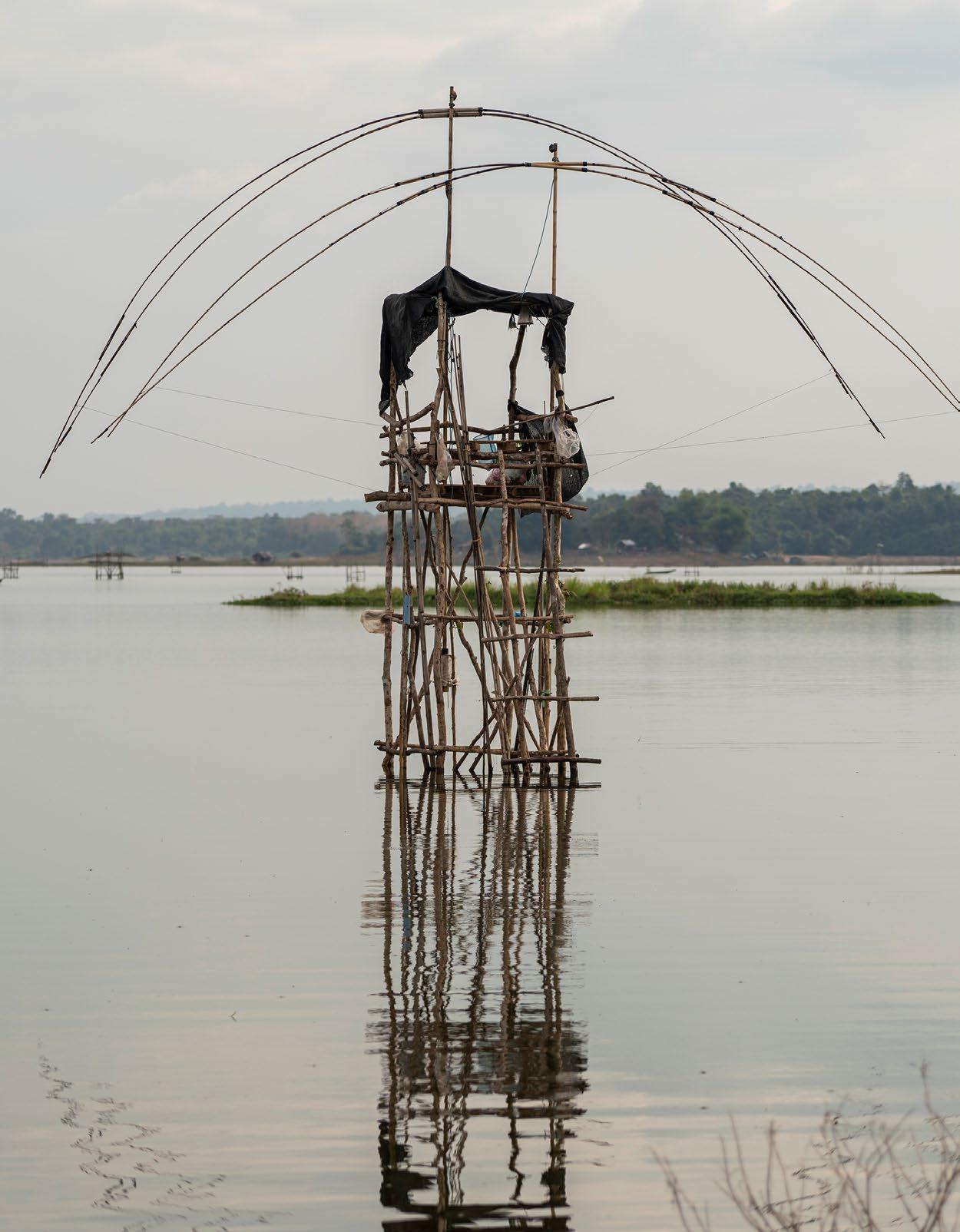


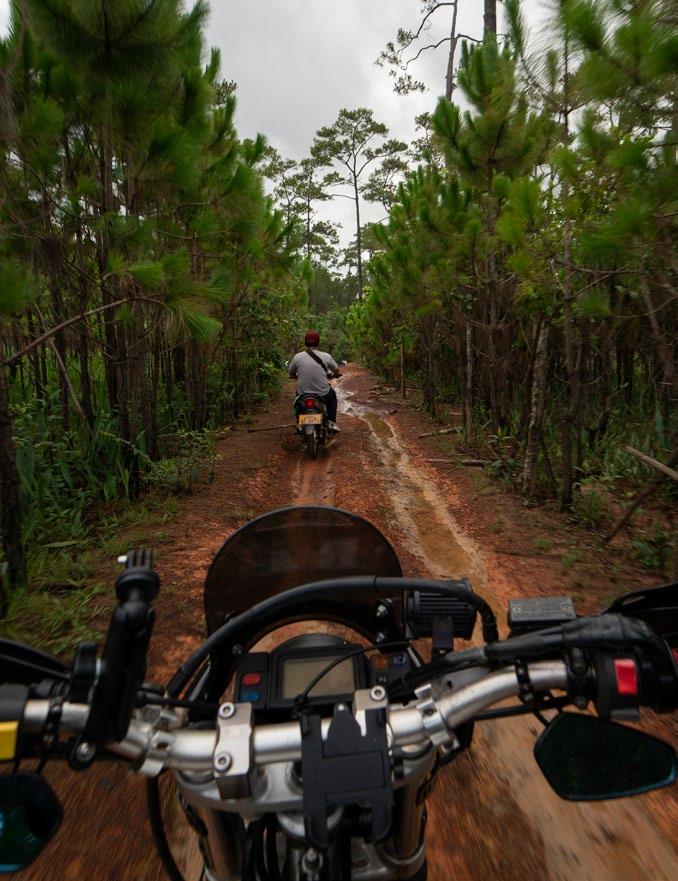

Situated in the Phou Khao Khouay mountains, this area offers a unique landscape dotted with pine trees—unusual for the Vientiane region—making it ideal for picnicking and camping.
Constructed four decades ago for irrigation, it has become a fascinating fishing destination where locals erect tall bamboo towers to operate large nets called kadoung.
CAPTIONS
1: Water spills over a cliff at Yod Xouang
2: Large fishing nets, called kadoung, are used at the Nam Houm Reservoir
3: Locals watch fisherman bring in their catch
4: The path to the Nam Mang Reservoir
5: The Nam Mang Reservoir is blissfully peaceful
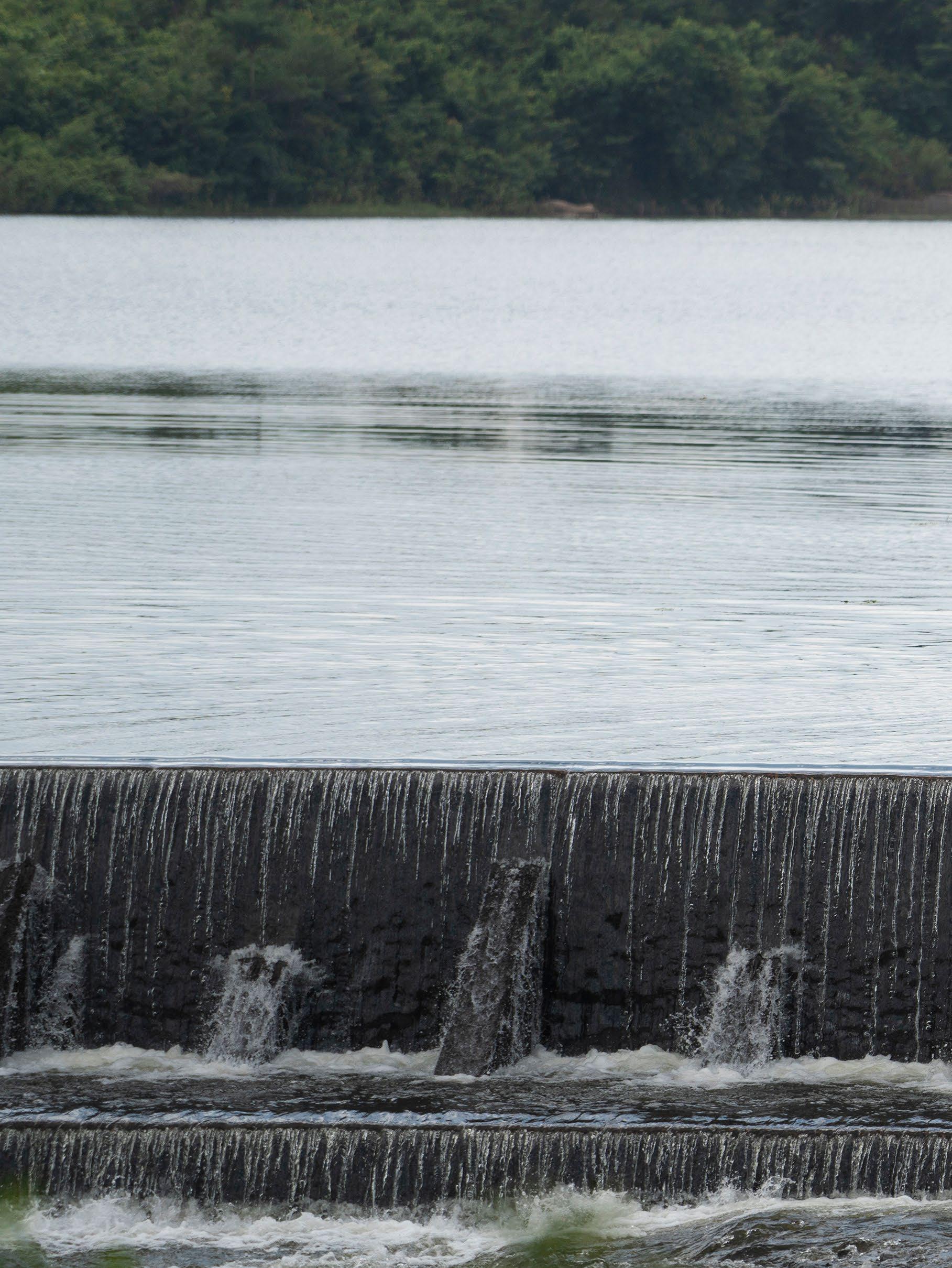
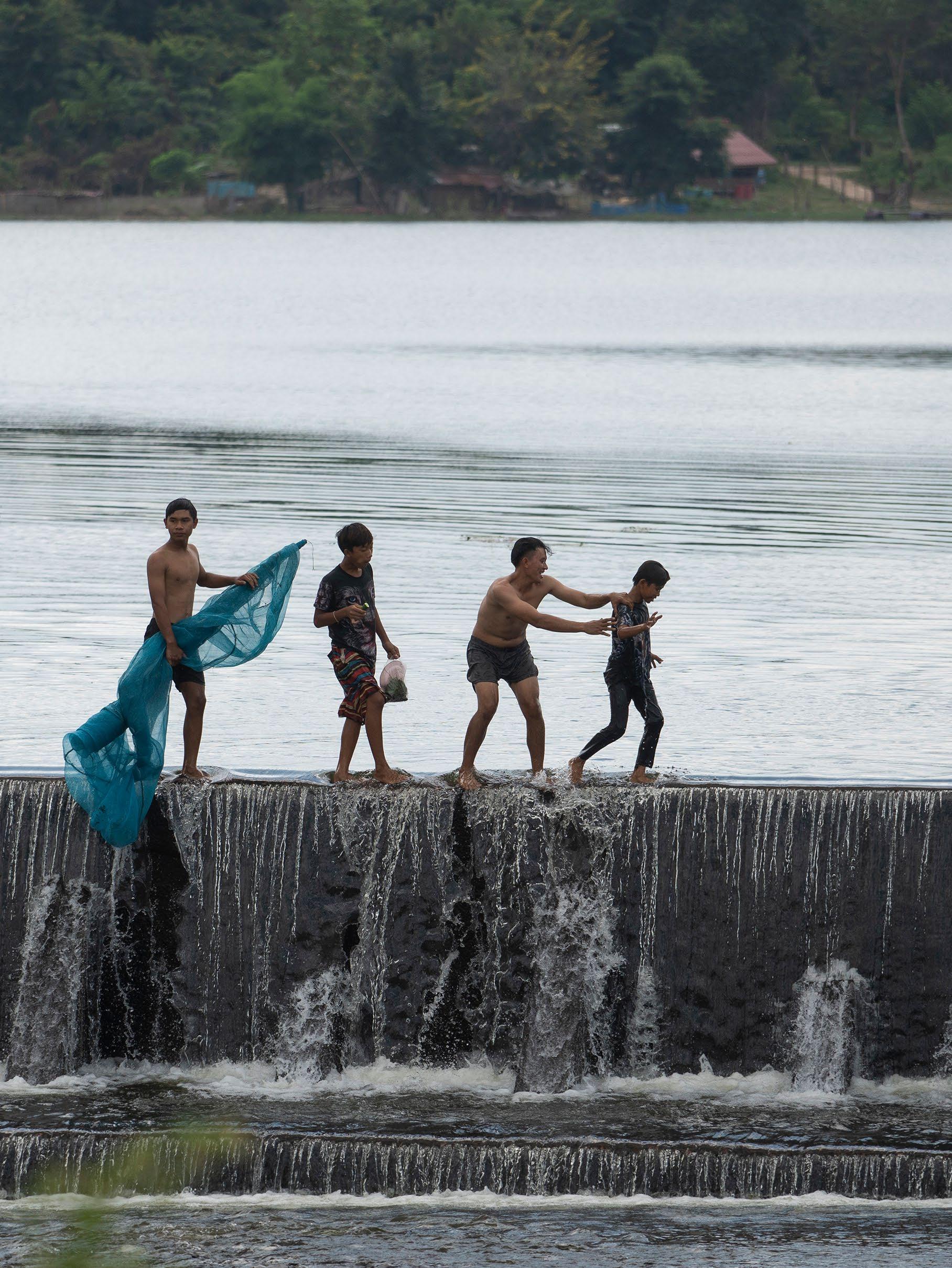
This expansive lake features excellent local restaurants at both ends and offers boat rentals for island exploration and camping adventures.

Located west of Vientiane, provides popular day-hiking trails with spectacular views across the Mekong River into Thailand. The trailhead conveniently begins at Wealth Coffee in Ban Ang Yai.


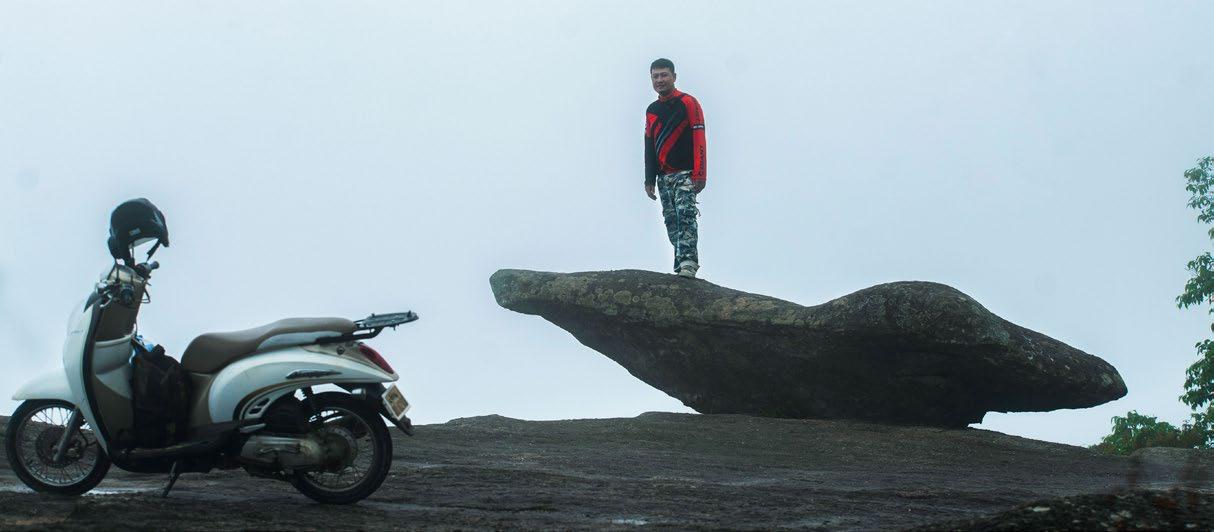
Visitors can marvel at an ancient balanced rock perched precariously on a sandstone cliff, offering stunning vistas of the Vientiane plains below.
1: A boat glides across the Nam Xouang Reservoir
2: Dramatic sunset views at Phou Phanang
3: Motorbiking along Pha Ngoi cliff
4: Pha Ngoi is known for this unusual rock formation
5: Trekking to Phou Kong Khao
6: The terrain is at Phou Kong Khao is rocky and grassy
7: Stopping for a break to enjoy the view at Phou Pha Dai
On the northern edge of Nam Mang Reservoir, it offers more adventurous picnicking and camping opportunities amid unique landscapes.
This most challenging destination requires a 6-7 hour trek from the Nam Mang Reservoir. This challenging journey rewards overnight campers with breathtaking panoramic views of the night sky.

5 6

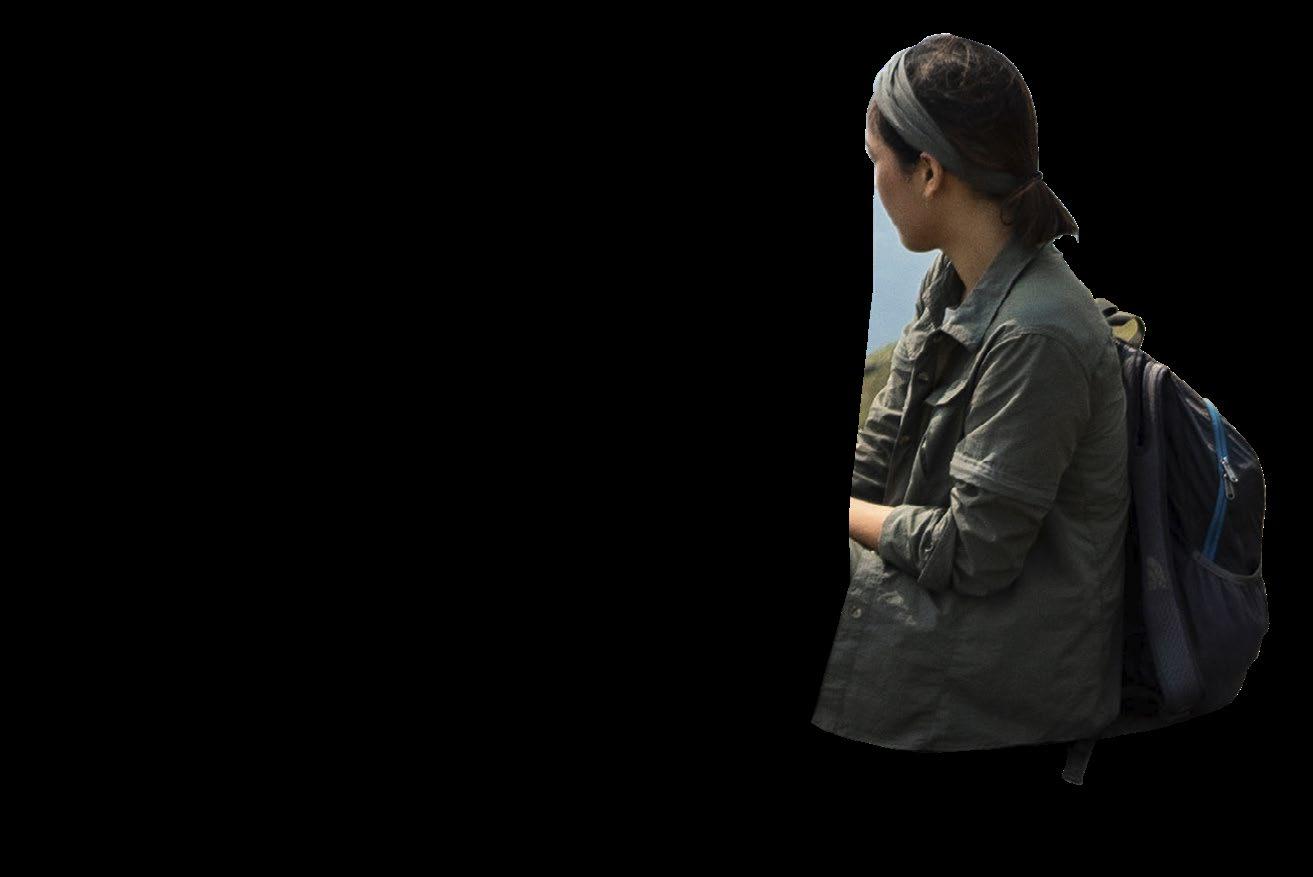
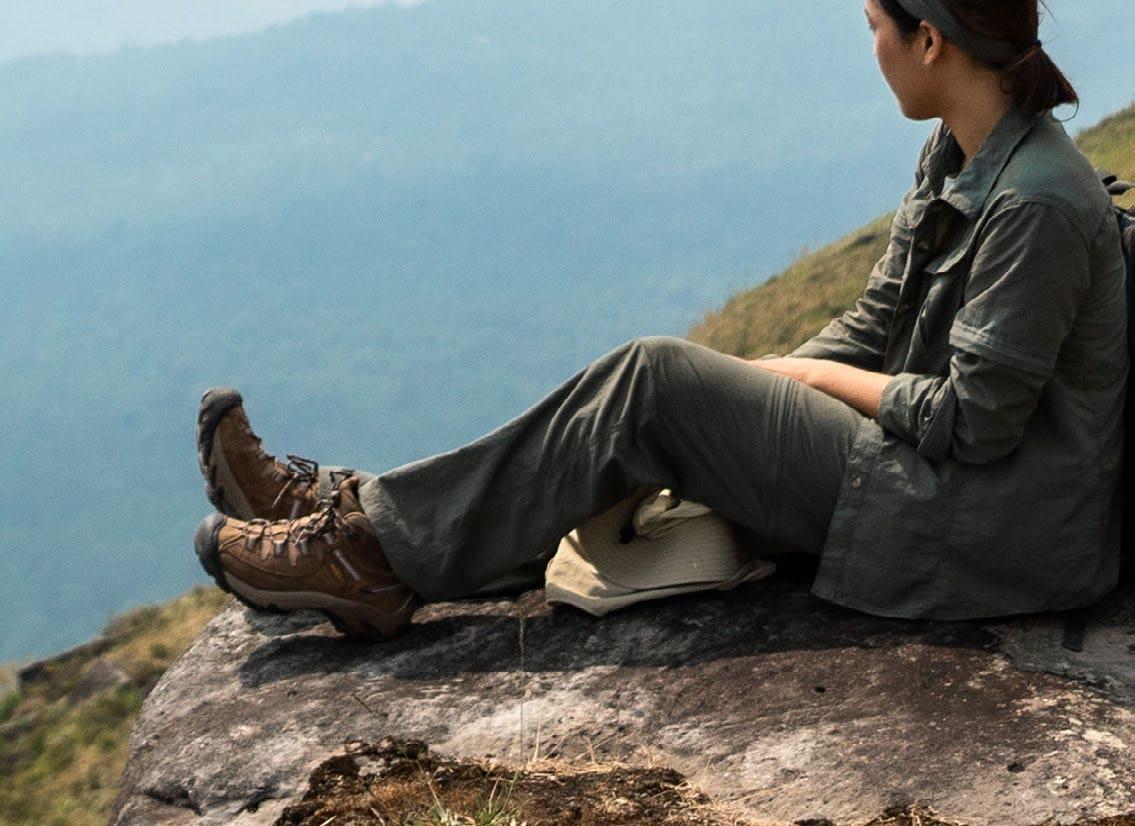
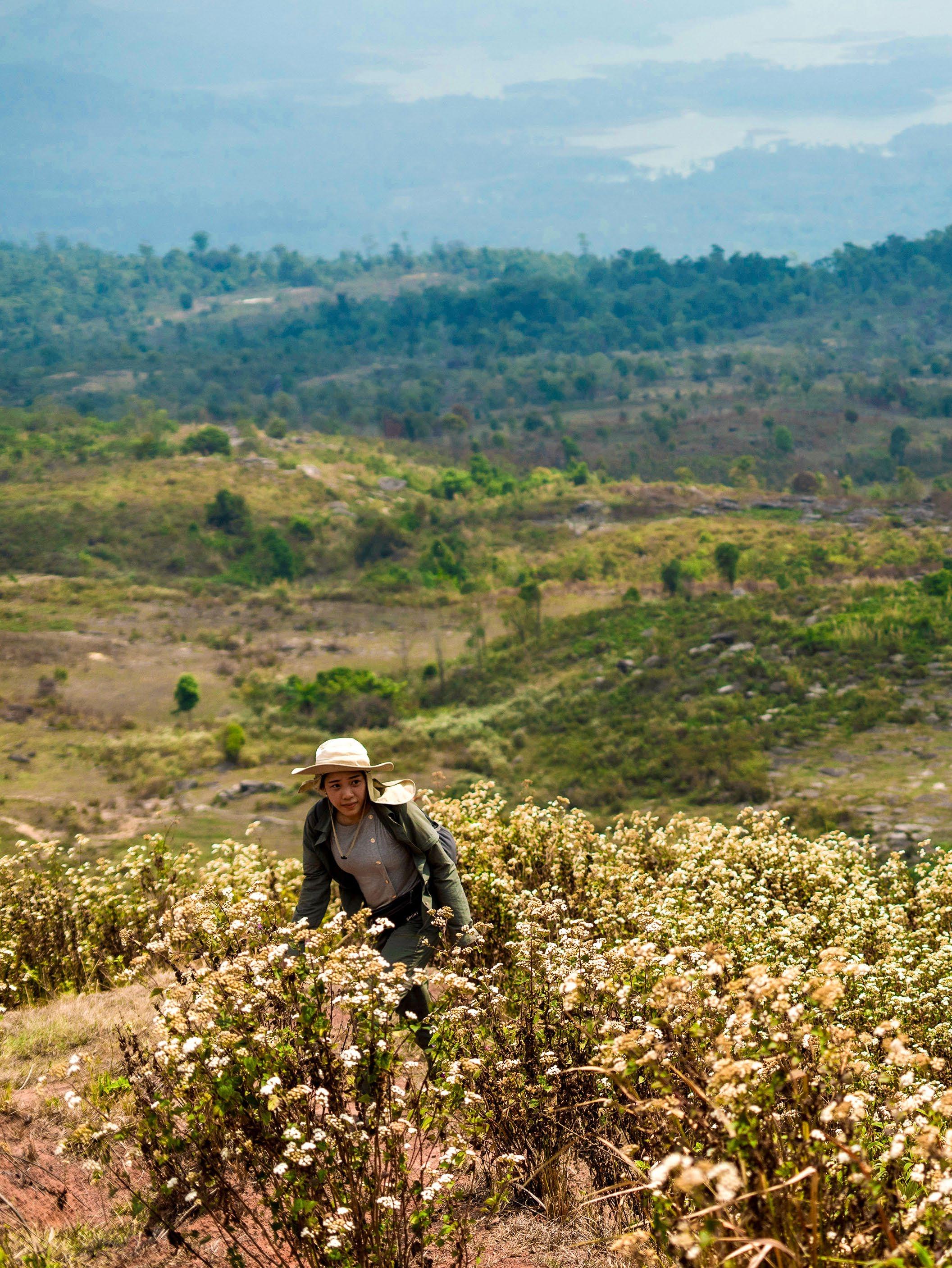
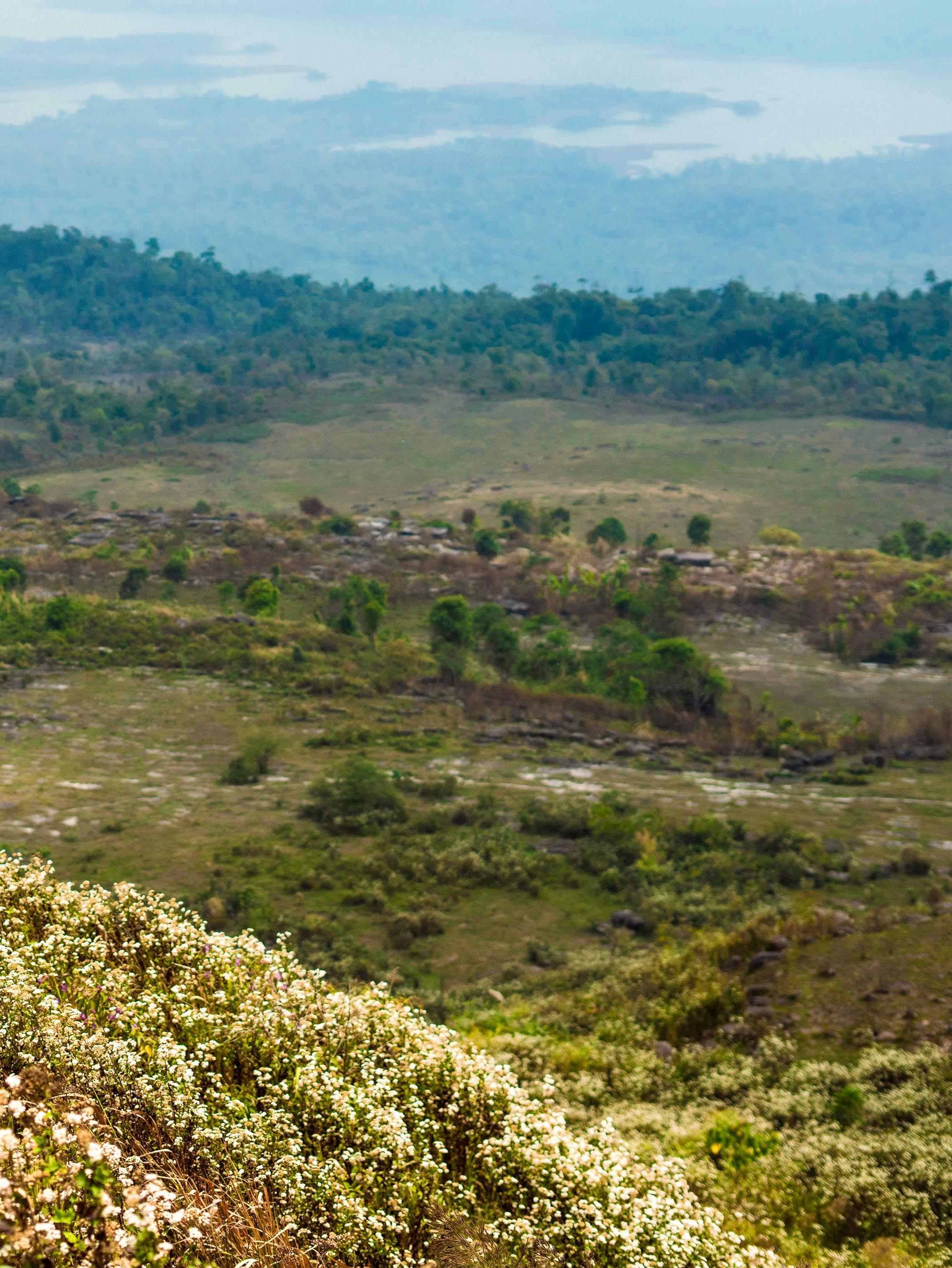
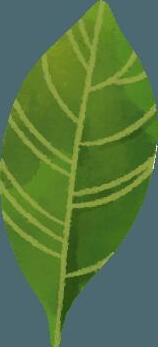

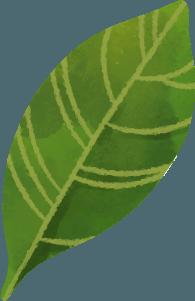
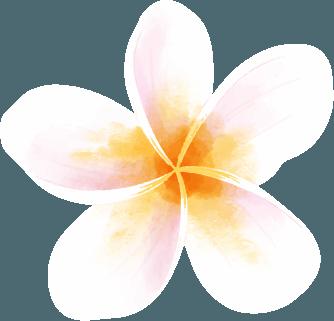

Anita Preston / Evensong Film
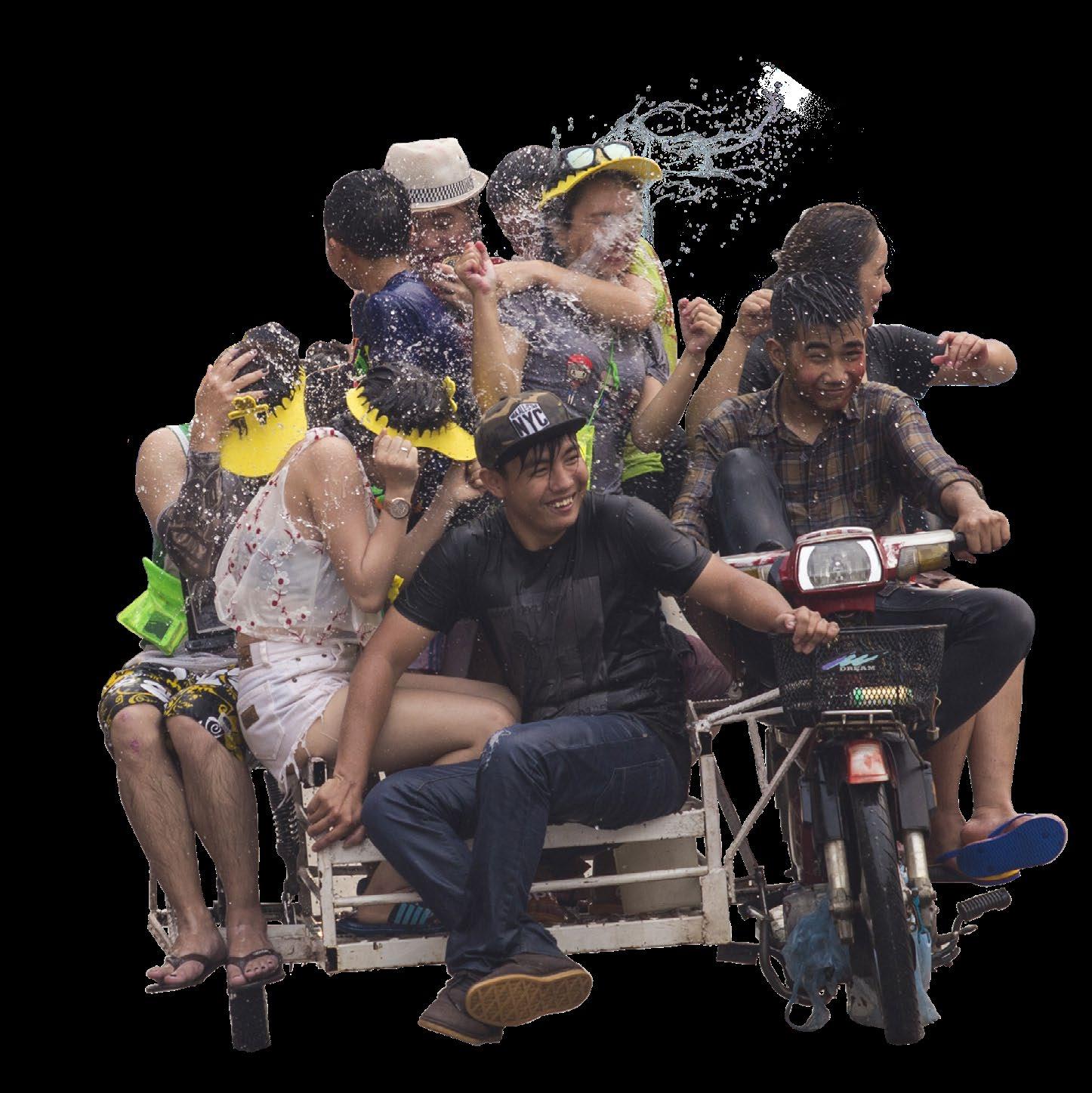







Through the hazy heat of mid-April, water arcs through Luang Prabang’s drowsy colonial streets, splattering against smiling faces and soaking cotton sinh skirts. This is Pi Mai, Lao New Year, where purification comes in the form of playful dousings from passing pickup trucks and gentle ceremonial pourings over burnished Buddha images. The city’s usual languor transforms into a choreography of celebration, as barefoot monks in saffron robes receive alms at dawn and families gather in wooden homes perfumed with incense and dok champa blossoms.
Inside glittering temples, like Wat Xieng Thong, devotees move methodically from shrine to shrine, tipping silver bowls of scented water over serene statues while whispering prayers for good fortune. Meanwhile, in homes across the capital, grandmothers oversee the preparation of mountainous platters of papaya salad, their practiced hands mixing lime juice and fresh herbs as children dart past with water pistols. The rhythms of traditional music float through neighborhoods where baci ceremonies bind communities together, white cotton strings tied around wrists to anchor wandering spirits and ensure prosperity in the year to come. Here, amidst the water and warmth, ancient traditions don’t just survive – they splash gloriously into the present.


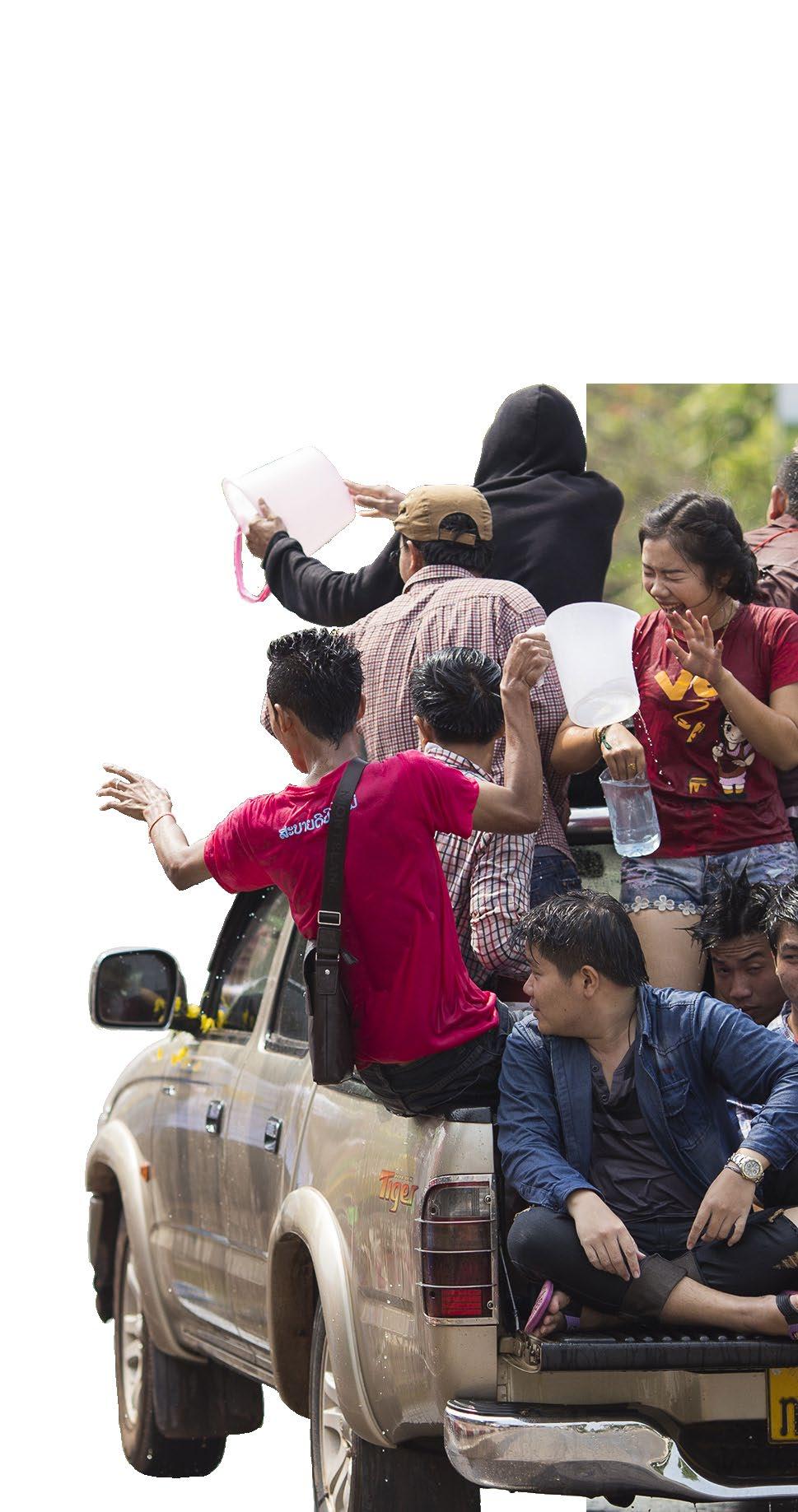


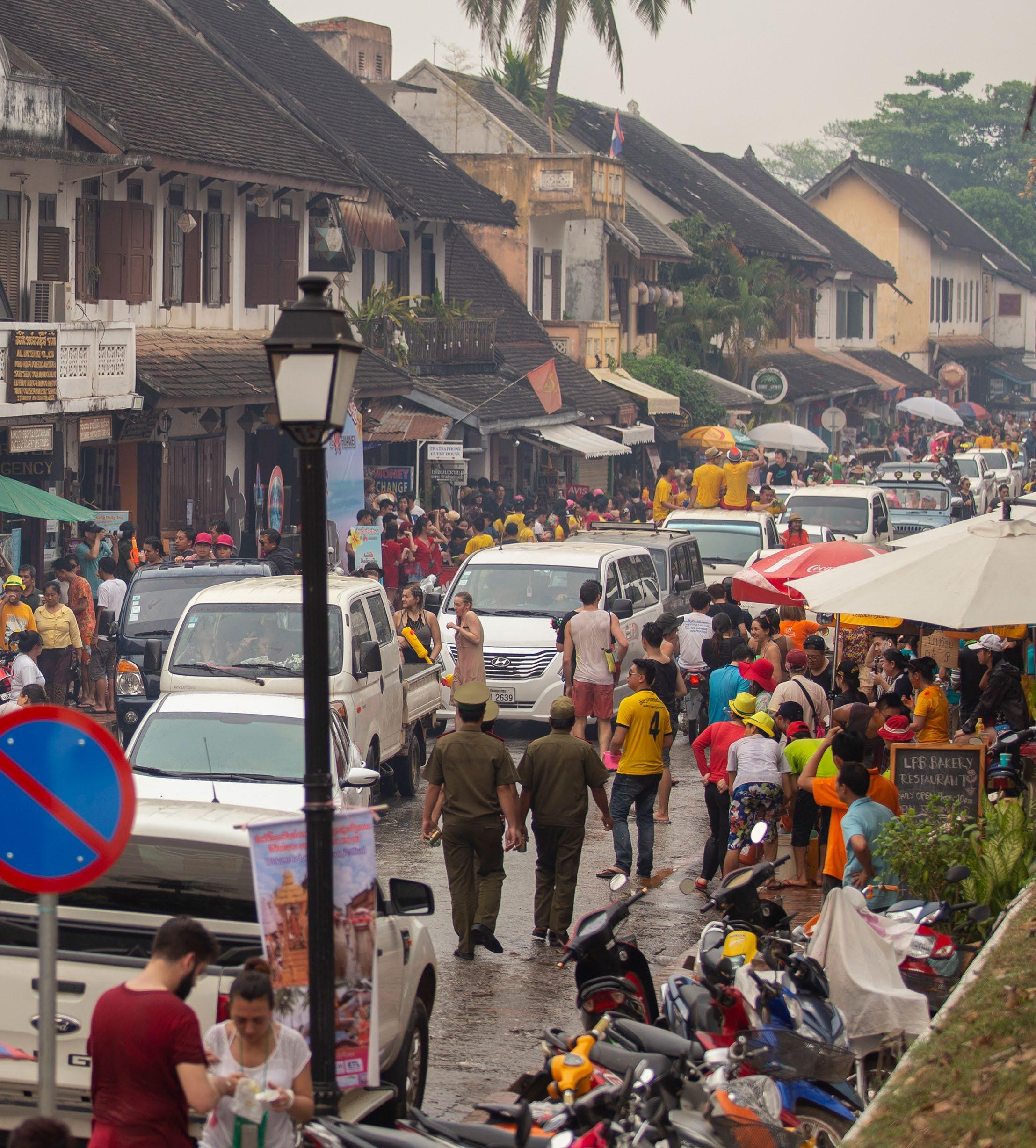



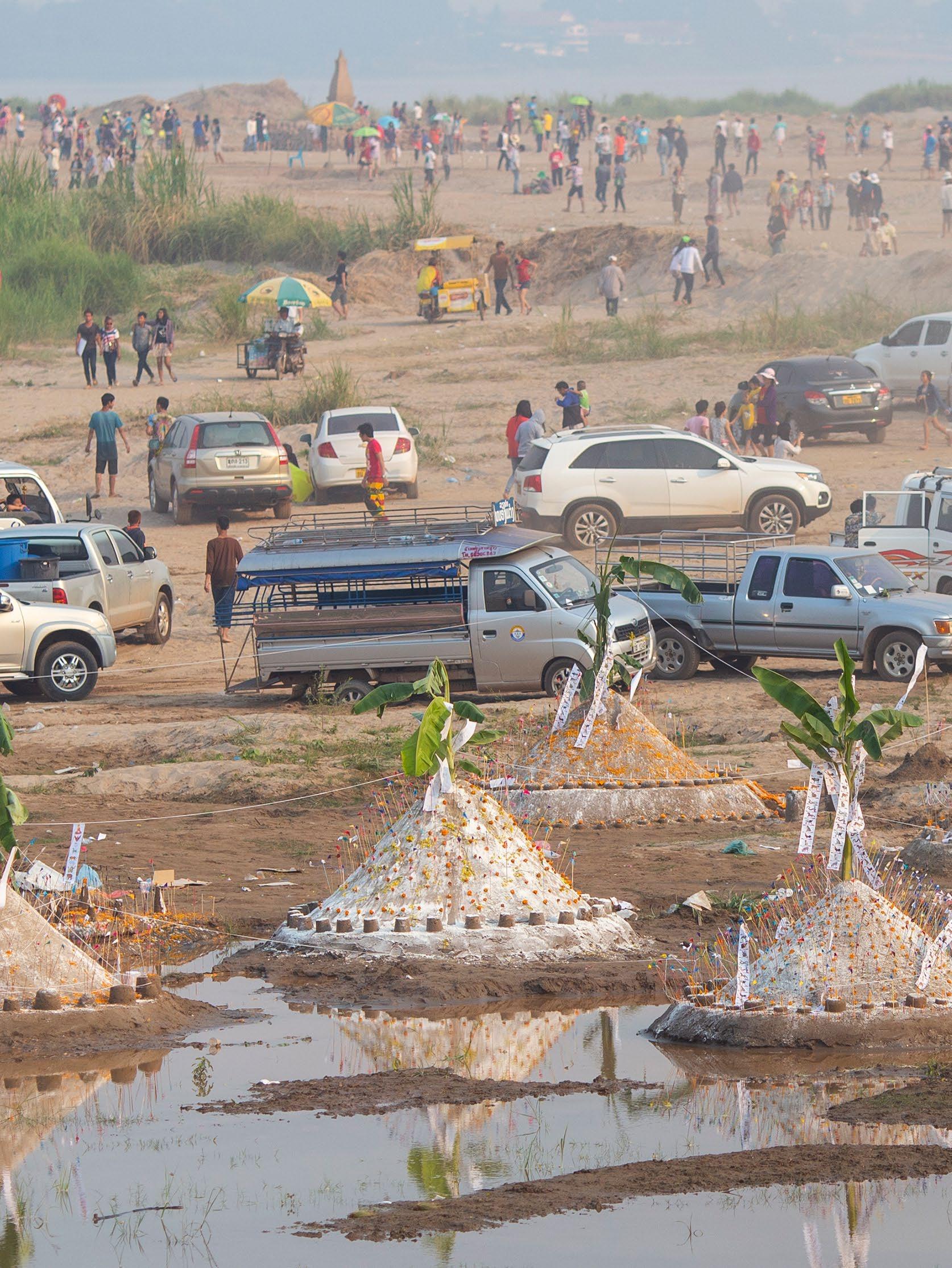

In addition to tossing water, rubbing powder on one another is another way of wishing luck for the new year


350

VIENTIANE – XAYABOULY 01:05 h
VIENTIANE – XIENGKHUANG 01:10 h
VIENTIANE – XAISOMBOUN 00:40 h
VIENTIANE – HOUAPHAN 02:25 h
VIENTIANE – PHONGSALY 02:20 h
VIENTIANE – LUANGNAMTHA 02:05 h
VIENTIANE – OUDOMXAY 01:50 h
VIENTIANE – BORKEO 02:20 h
VIENTIANE – BORLIKHAMXAY 00:40 h
VIENTIANE – KHAMMUON 01:30 h
VIENTIANE – SAVANNAKETH 02:20 h
VIENTIANE – CHAMPASAK 03:20 h
VIENTIANE – SALAVANH 03:50 h
VIENTIANE – SEKONG 03:50 h
VIENTIANE – ATTAPEU 03:55 h
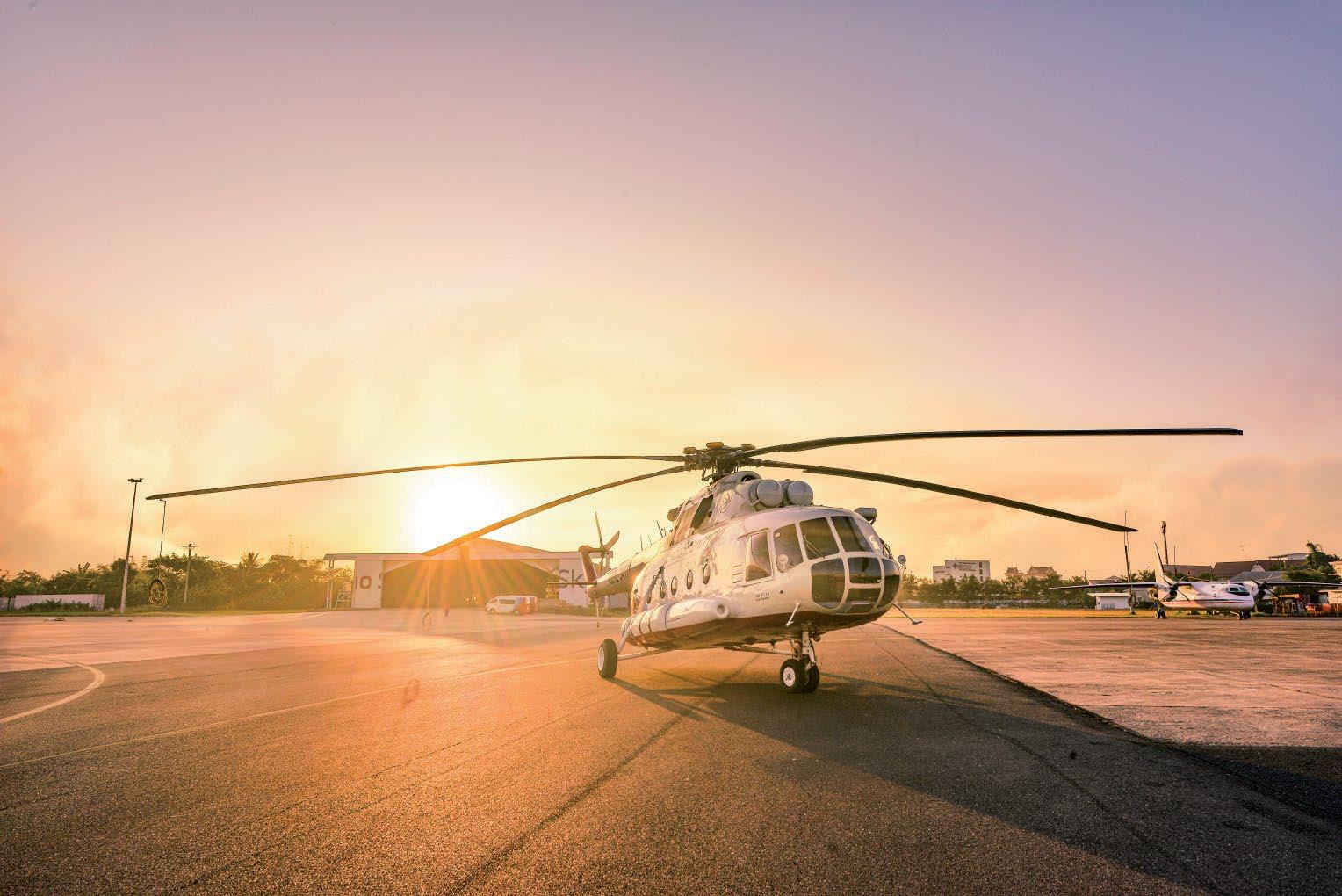
ROUTES ONE WAY ROUND TRIP
VIENTIANE – VANGVIENG 00:40 h
VIENTIANE – LUANGPRABANG 01:20 h
VIENTIANE – XAYABOULY 01:05 h
VIENTIANE – XIENGKHUANG 01:10 h
VIENTIANE – XAISOMBOUN 00:40 h
VIENTIANE – HOUAPHAN 02:25 h
VIENTIANE – PHONGSALY 02:20 h
VIENTIANE – LUANGNAMTHA 02:05 h
VIENTIANE – OUDOMXAY 01:50 h
VIENTIANE – BORKEO 02:20 h
VIENTIANE – BORLIKHAMXAY 00:40 h
VIENTIANE – KHAMMUON 01:30 h
VIENTIANE – SAVANNAKETH 02:20 h
VIENTIANE – CHAMPASAK 03:20 h
VIENTIANE – SALAVANH 03:50 h

VIENTIANE – SEKONG 03:50 h
VIENTIANE – ATTAPEU 03:55 h
VIENTIANE - OUDOMXAY 01:36 h
VIENTIANE - BORKEO 01:25 h
VIENTIANE - TONPHERNG 01:40 h
VIENTIANE - XIENGKHUANG 00:48 h
VIENTIANE - XAYABOULY 00:45 h
VIENTIANE - SAVANNAKETH 01:42 h
VIENTIANE - CHAMPASAK 02:20 h 01:30 h 01:36 h 03:12 h 02:50 h 03:20 h 03:24 h 04:40 h
h
h
h
h 07:40 h 07:50 h
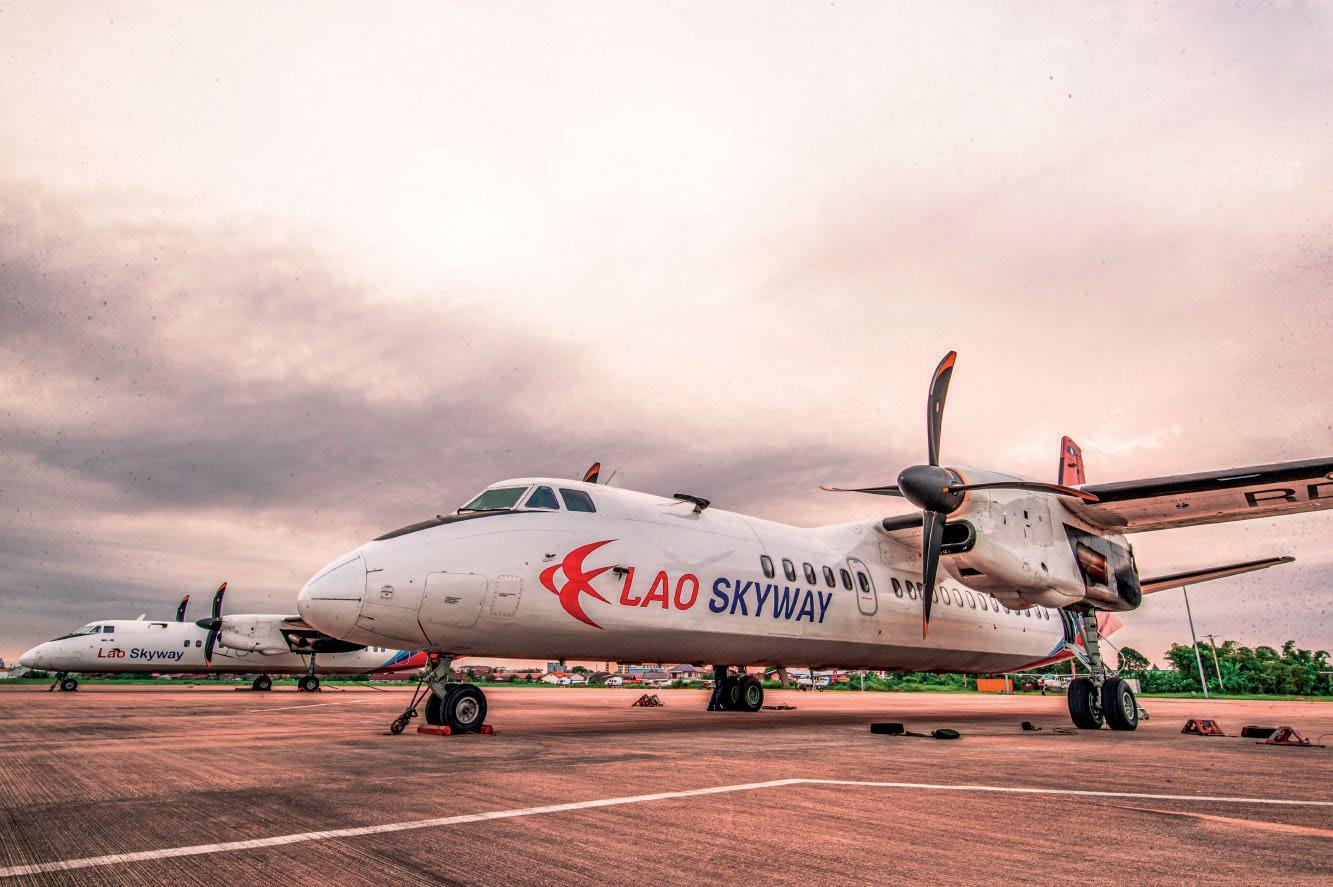
VIENTIANE – LUANGNAMTHA 00:55 h
VIENTIANE – OUDOMXAY 00:50 h
VIENTIANE – XIENGKHUANG 00:30 h
VIENTIANE – CHAMPASAK 01:35 h
VIENTIANE – BORKEO 01:05 h 01:00 h 01:50 h 03:10 h 01:40 h 02:10 h
VIENTIANE – ATTAPEU 02:00 h 04:00 h

